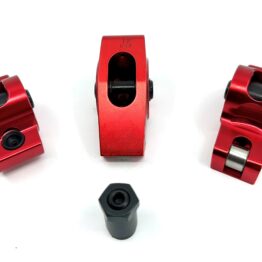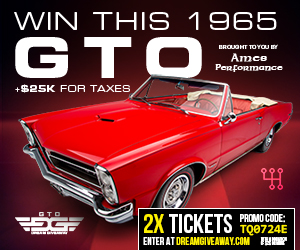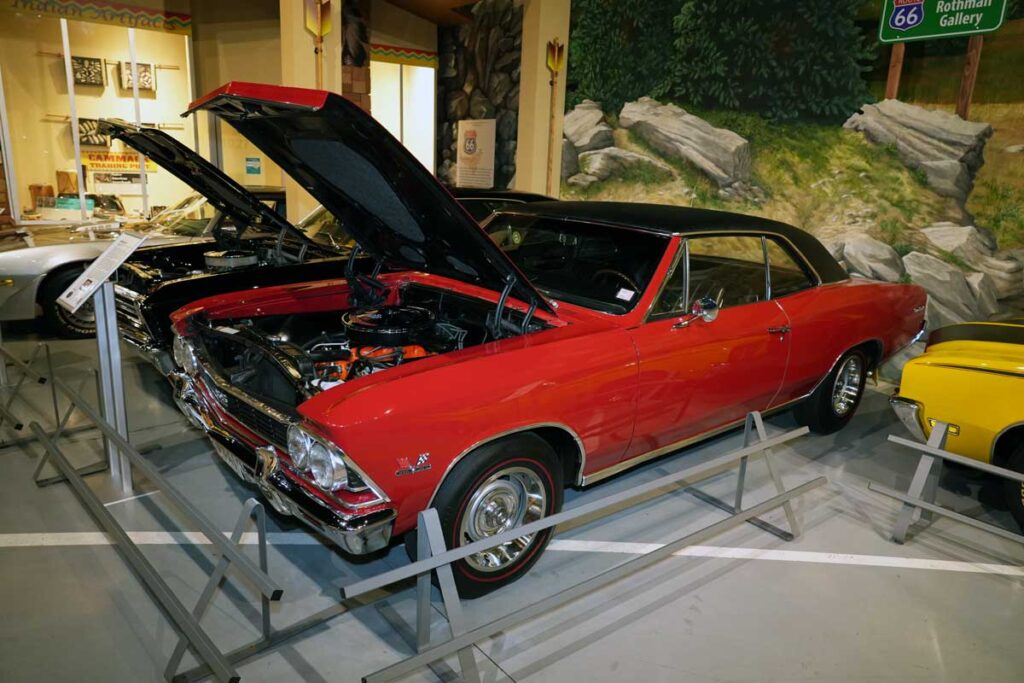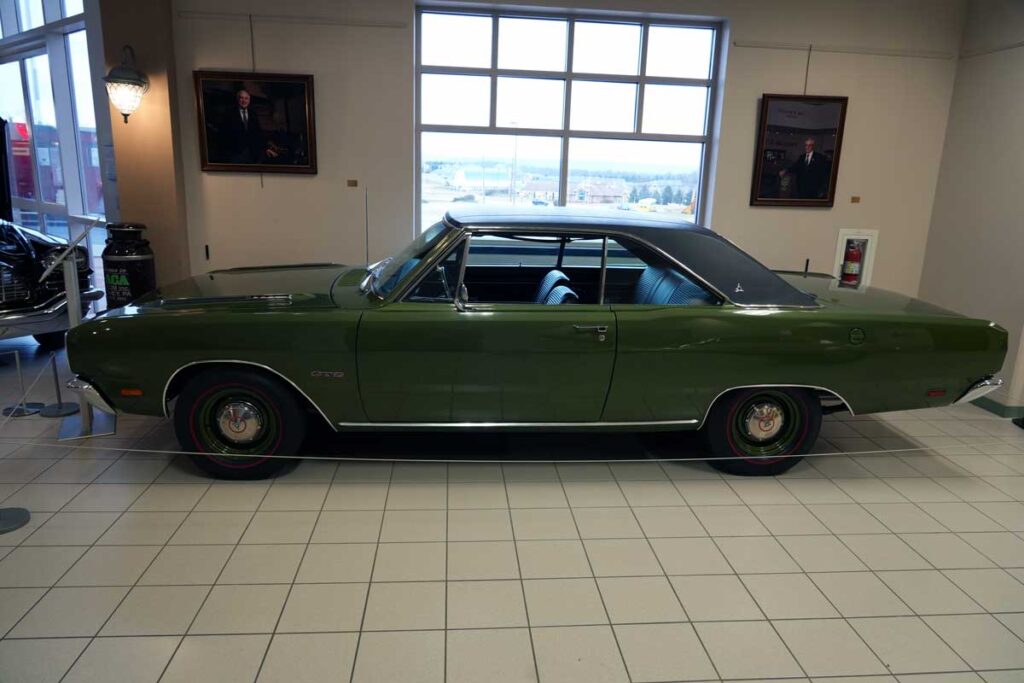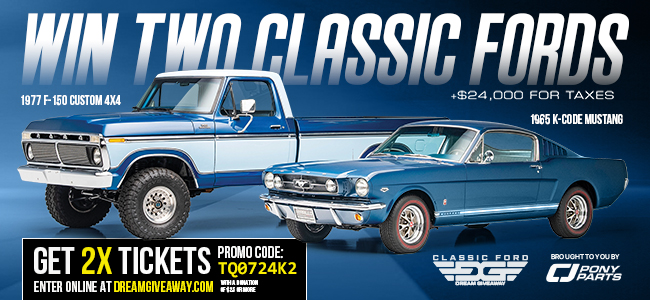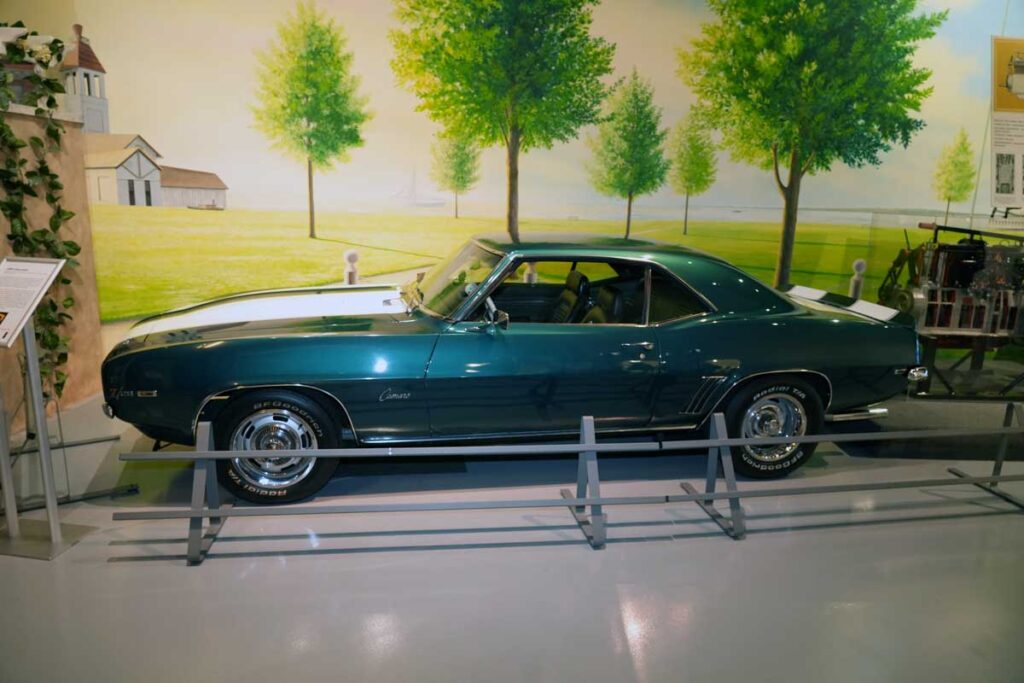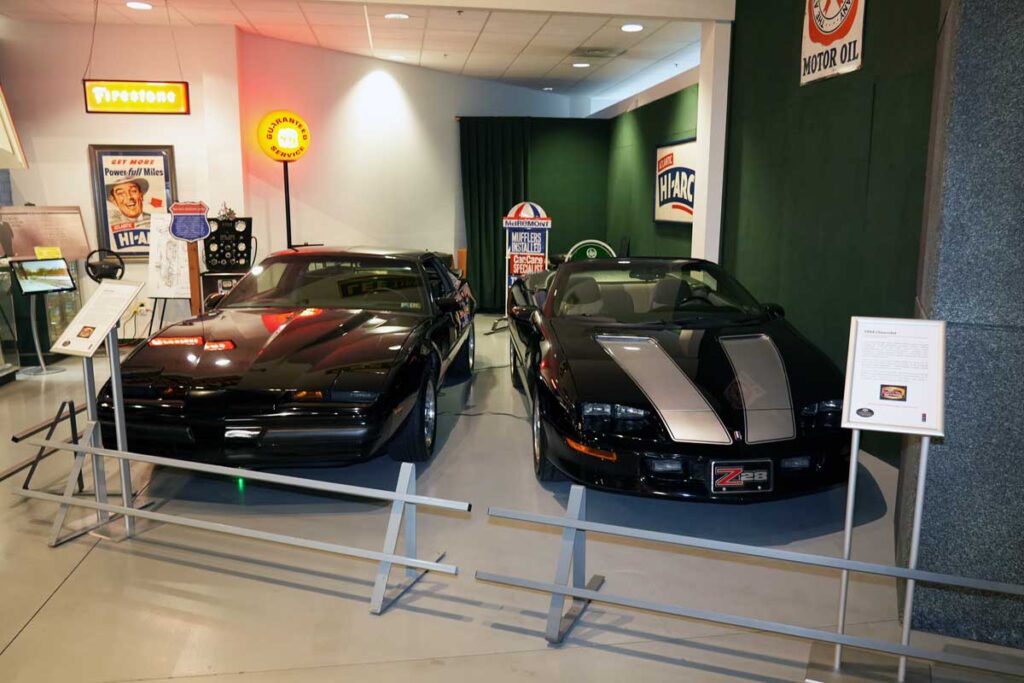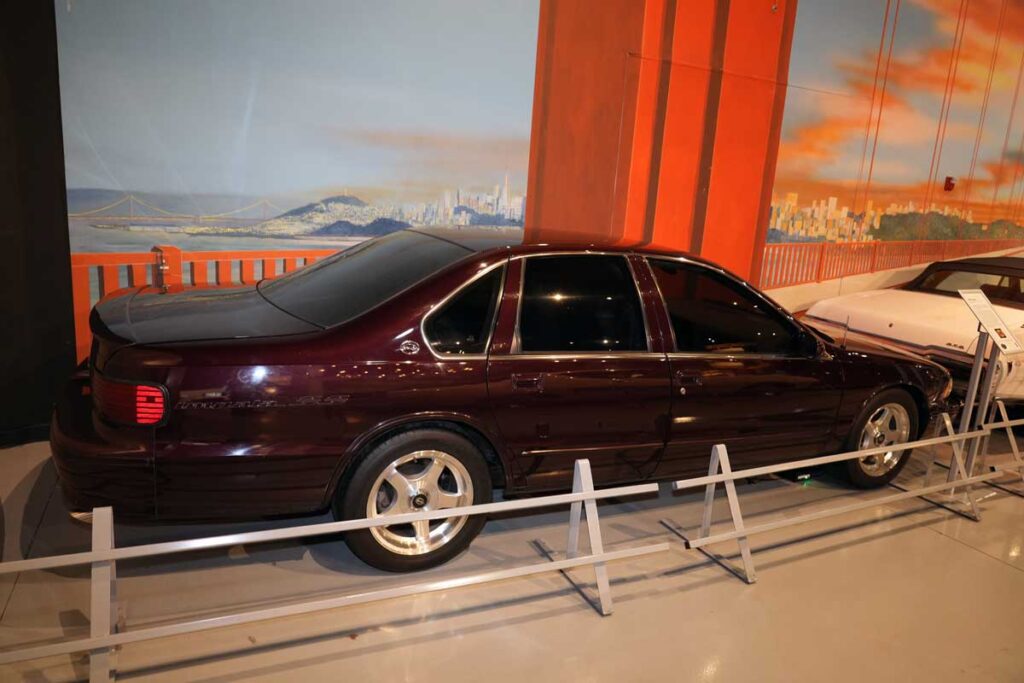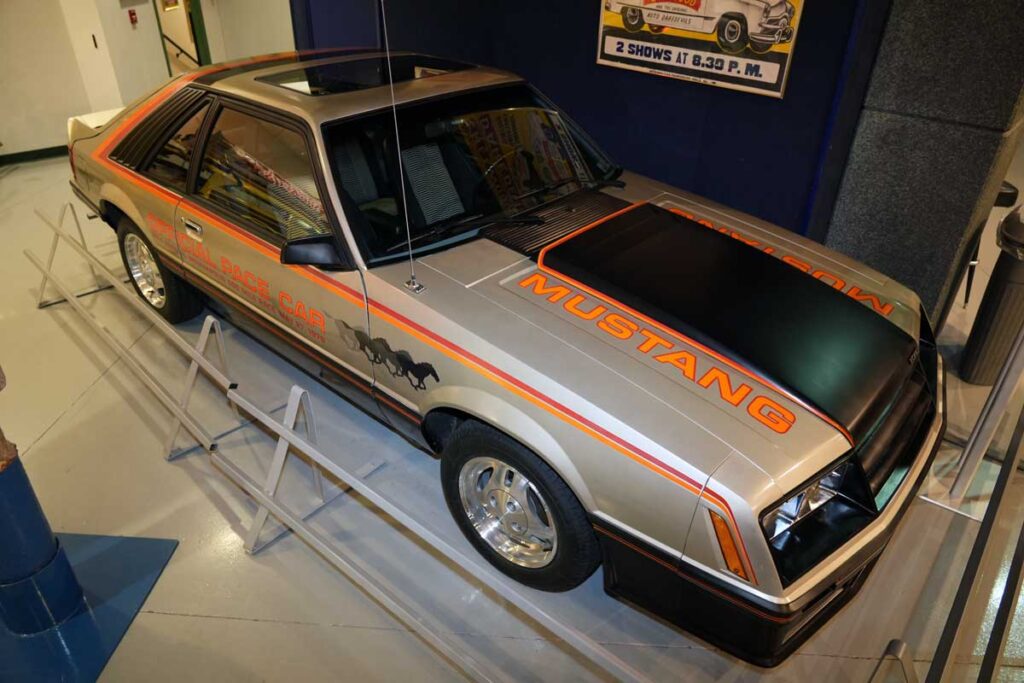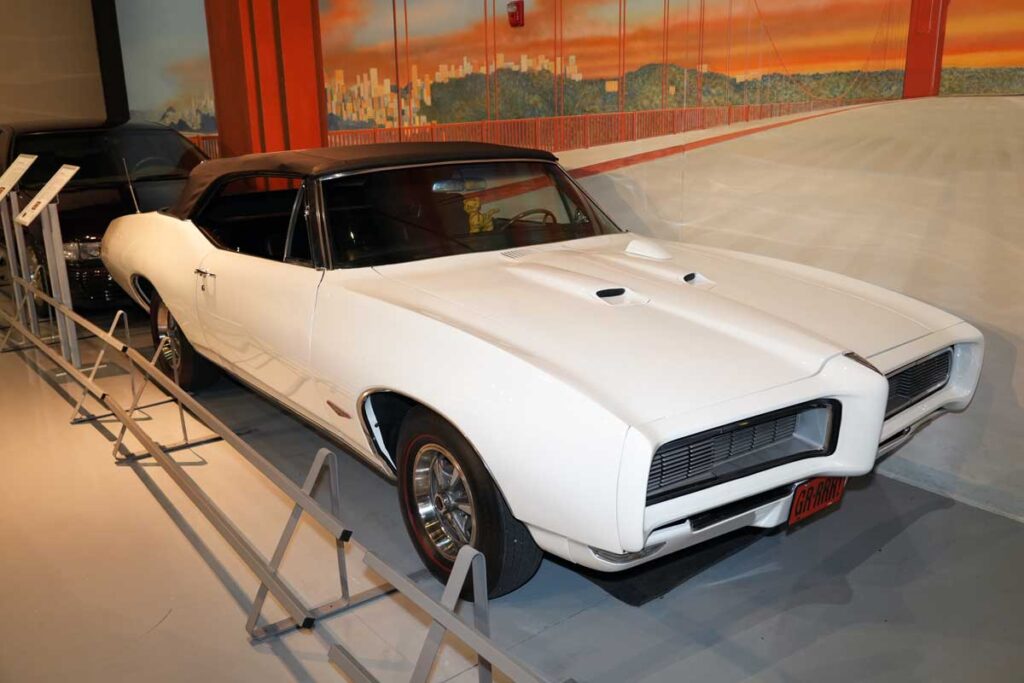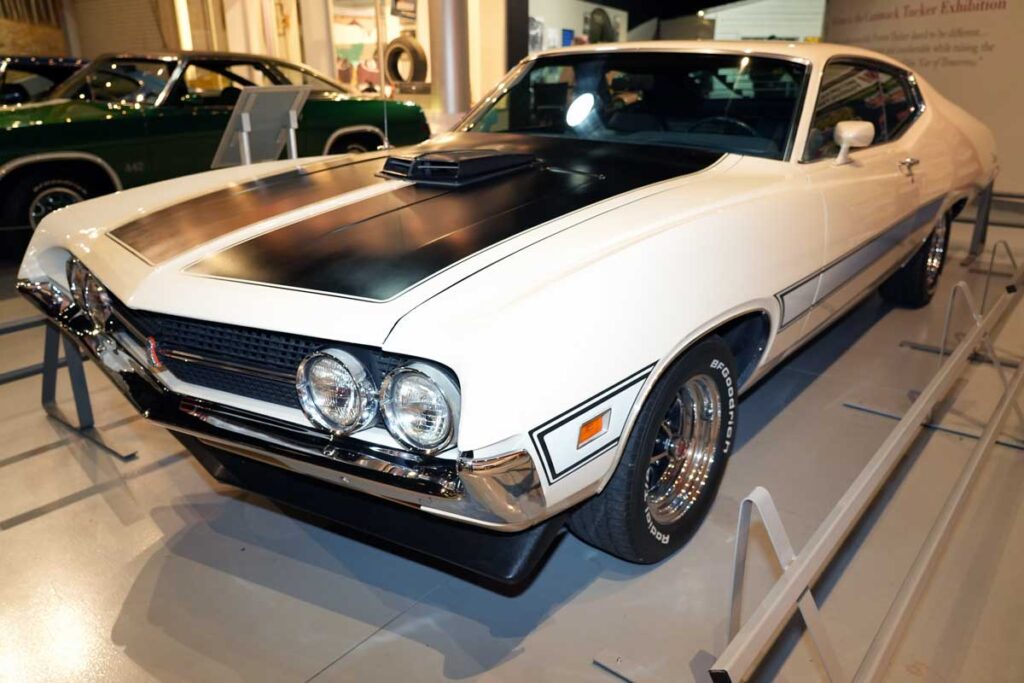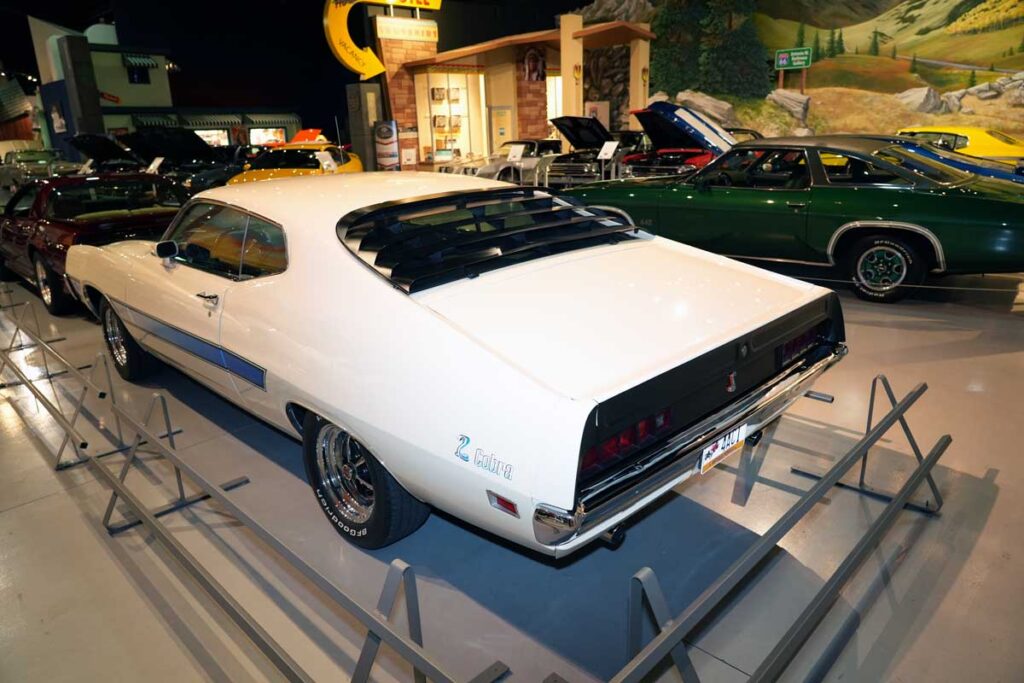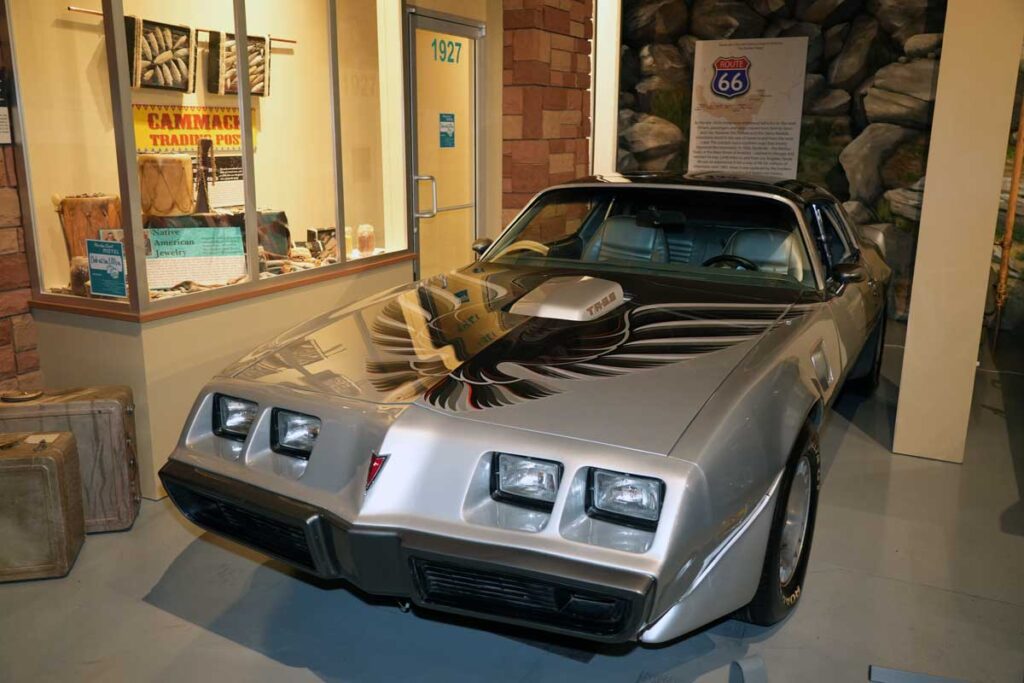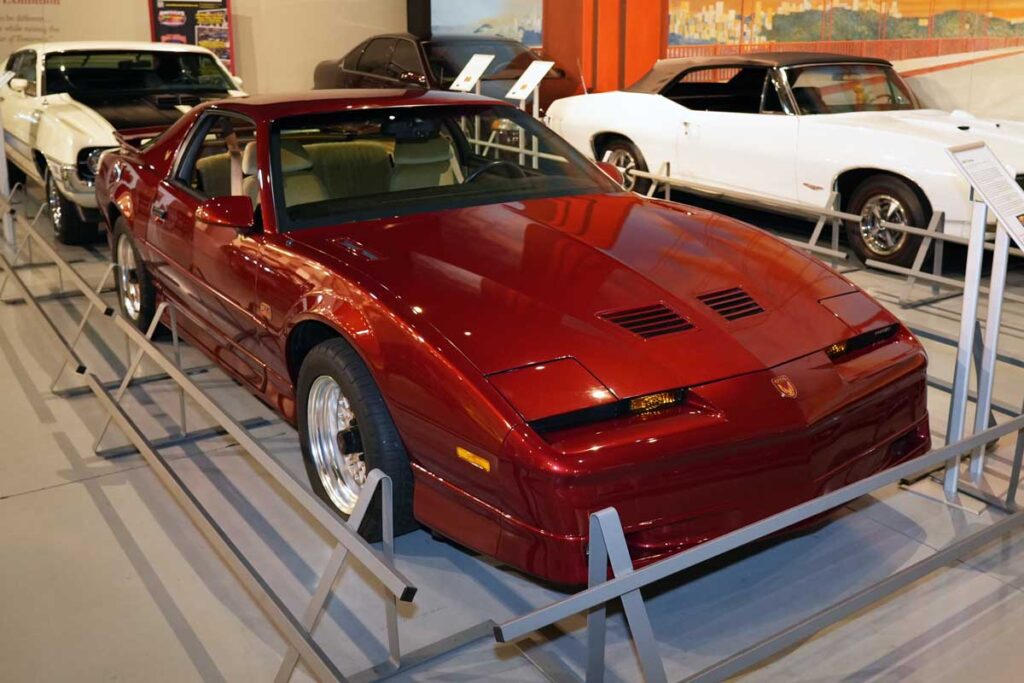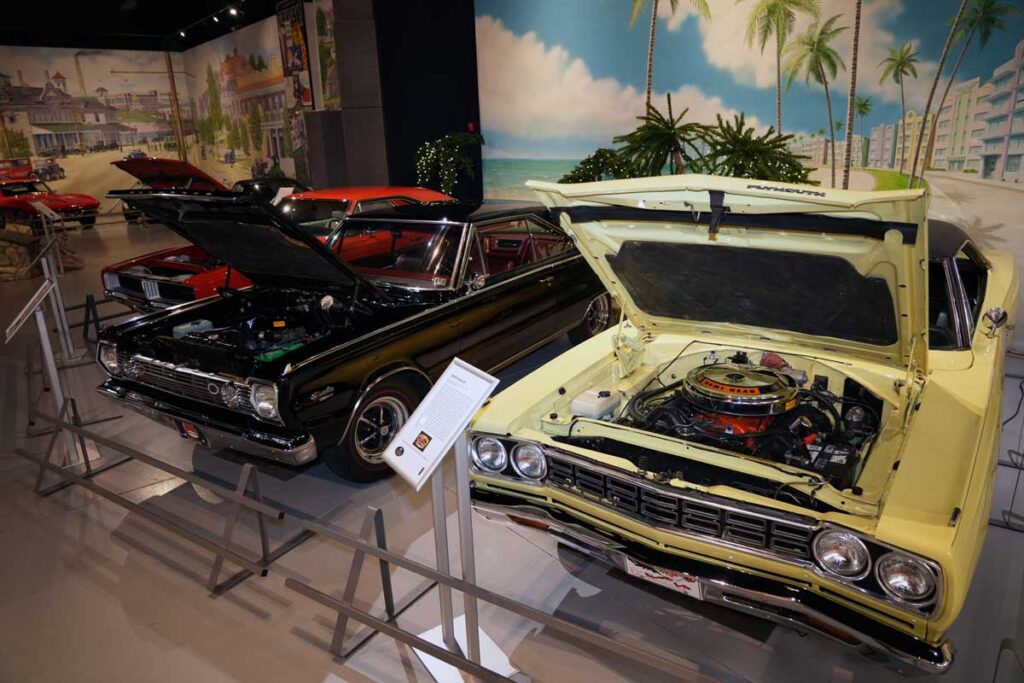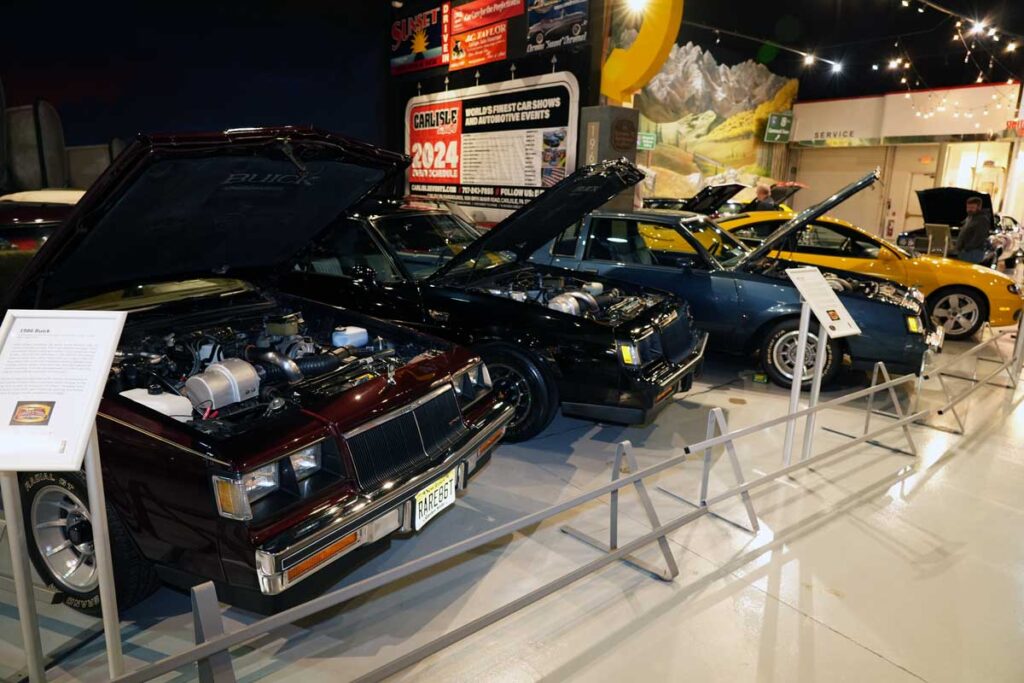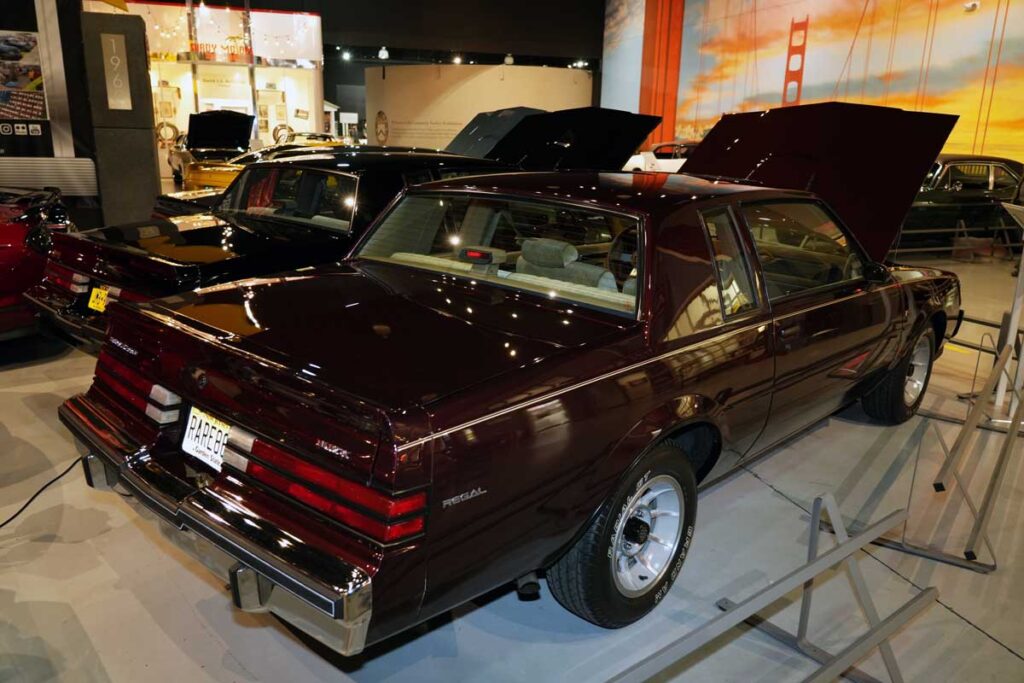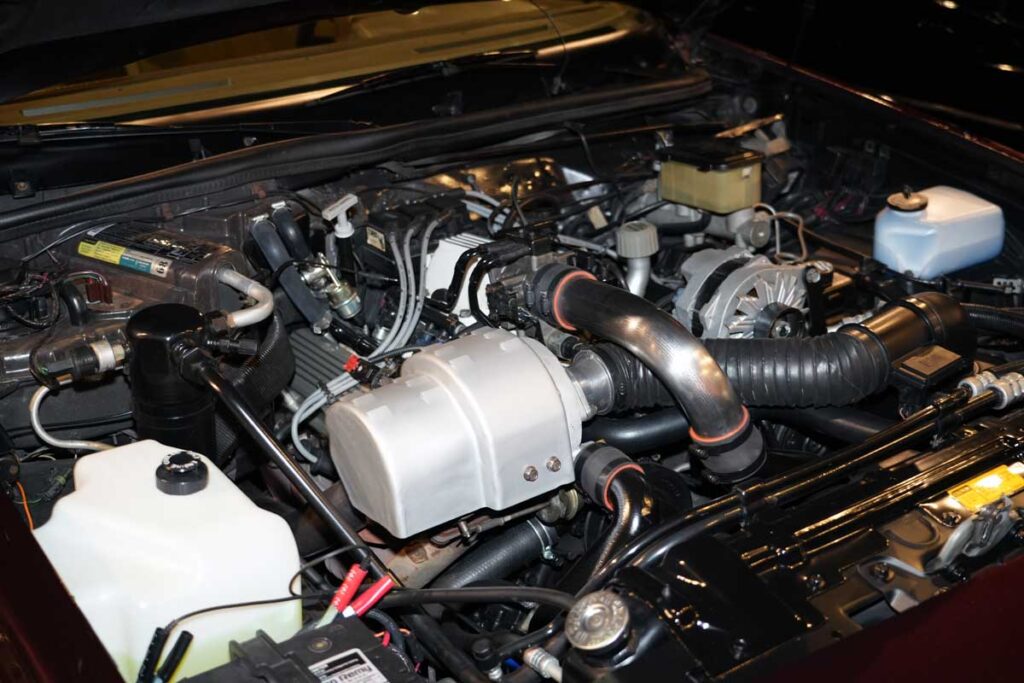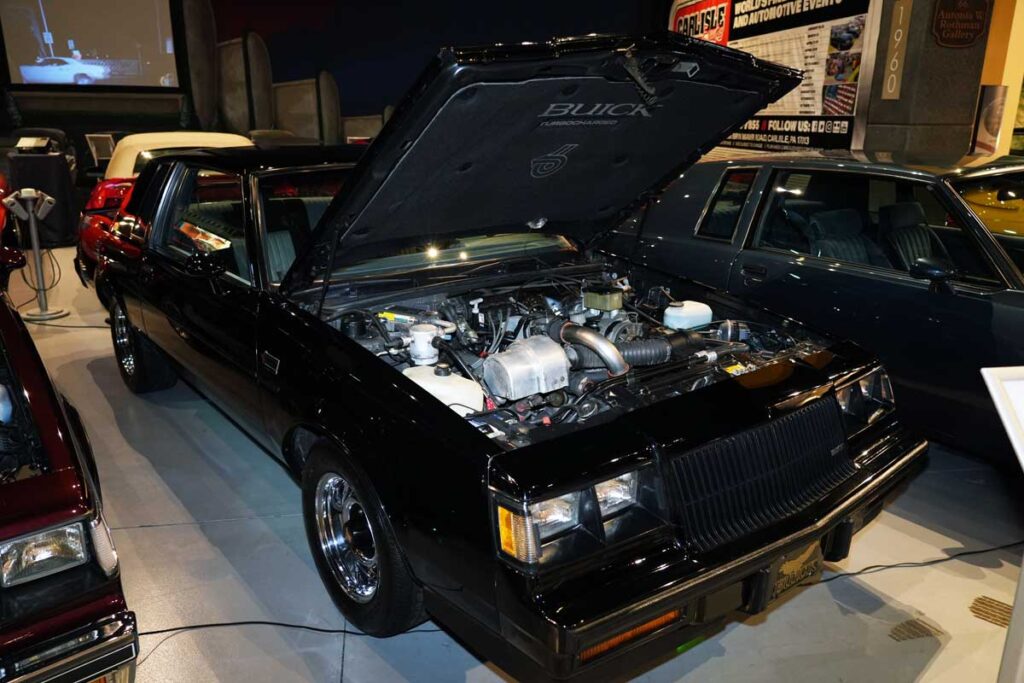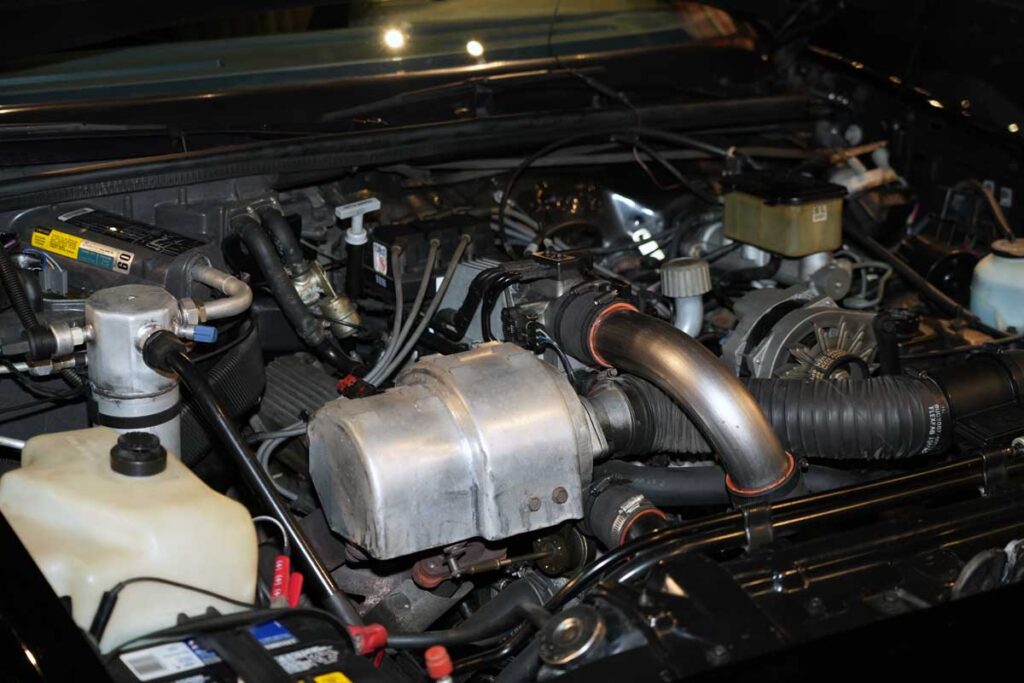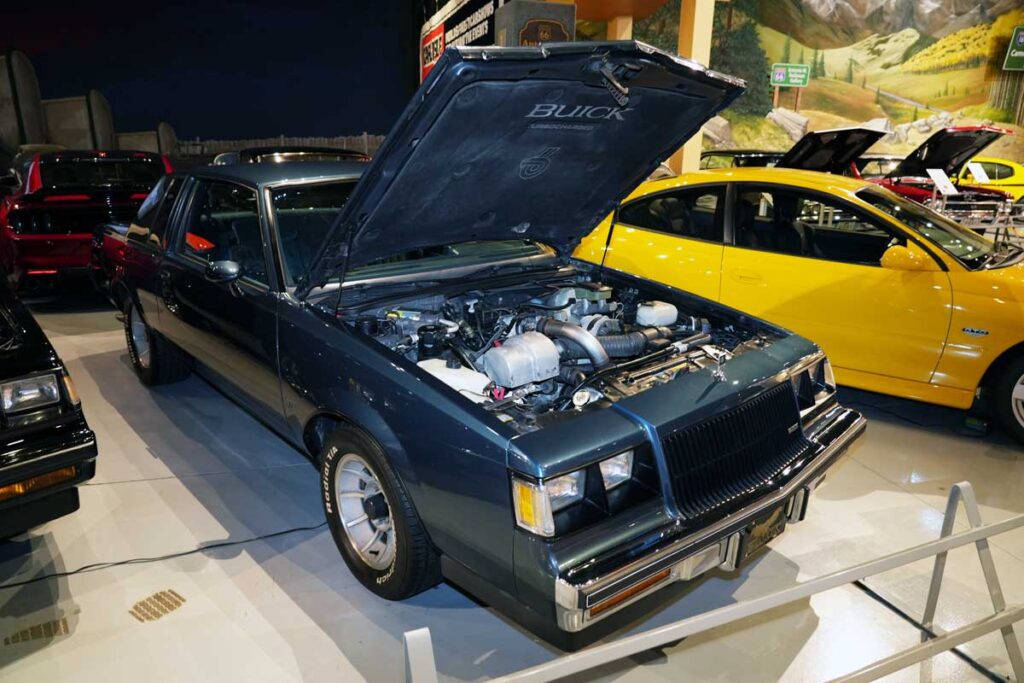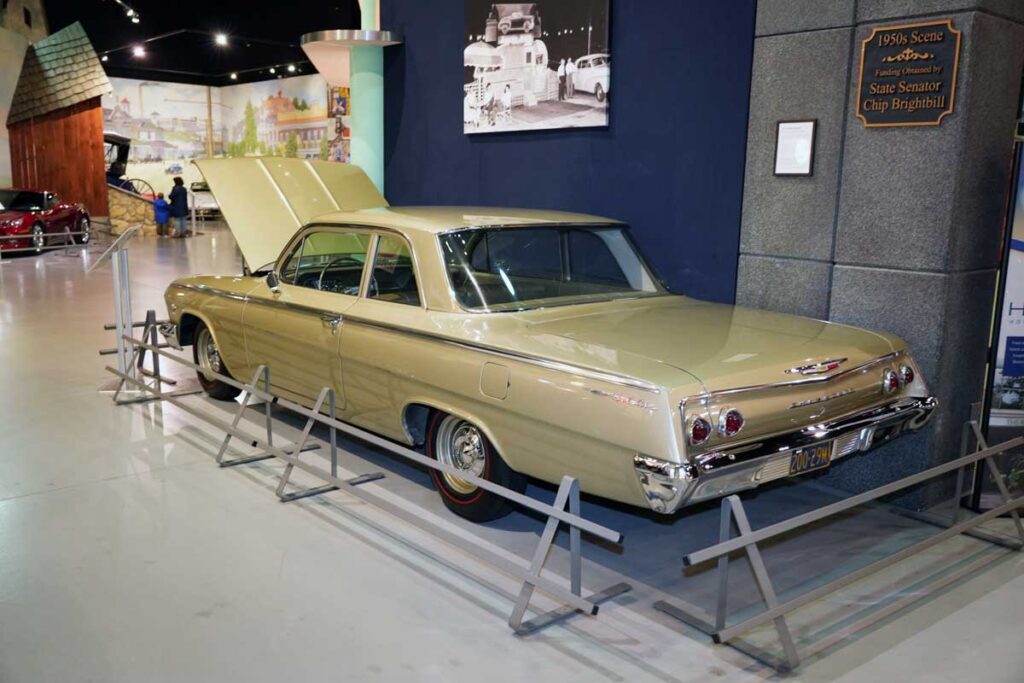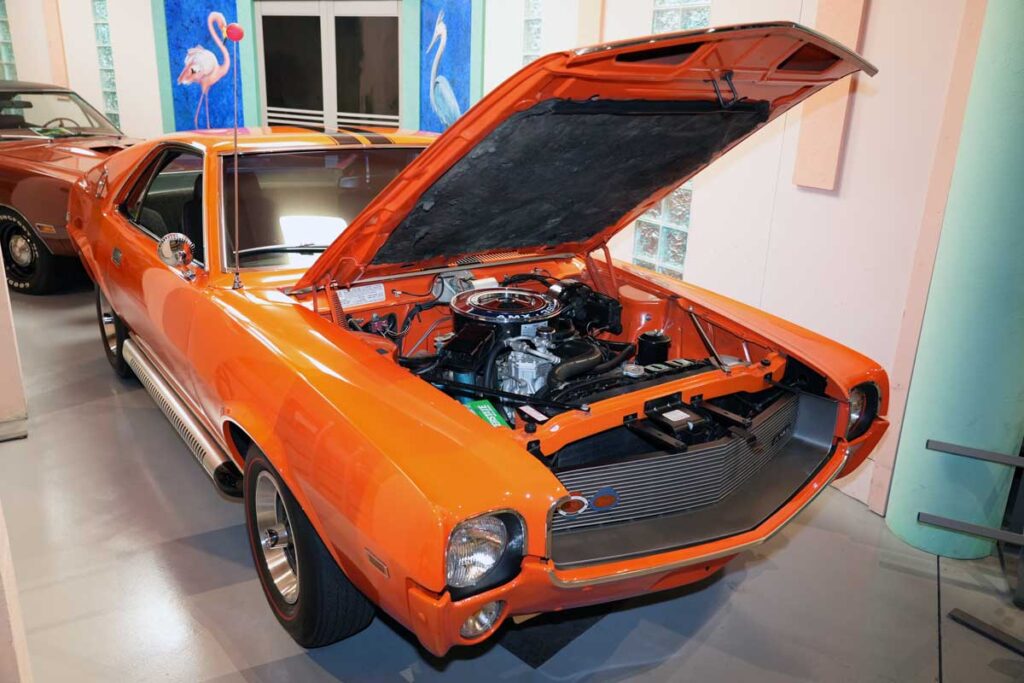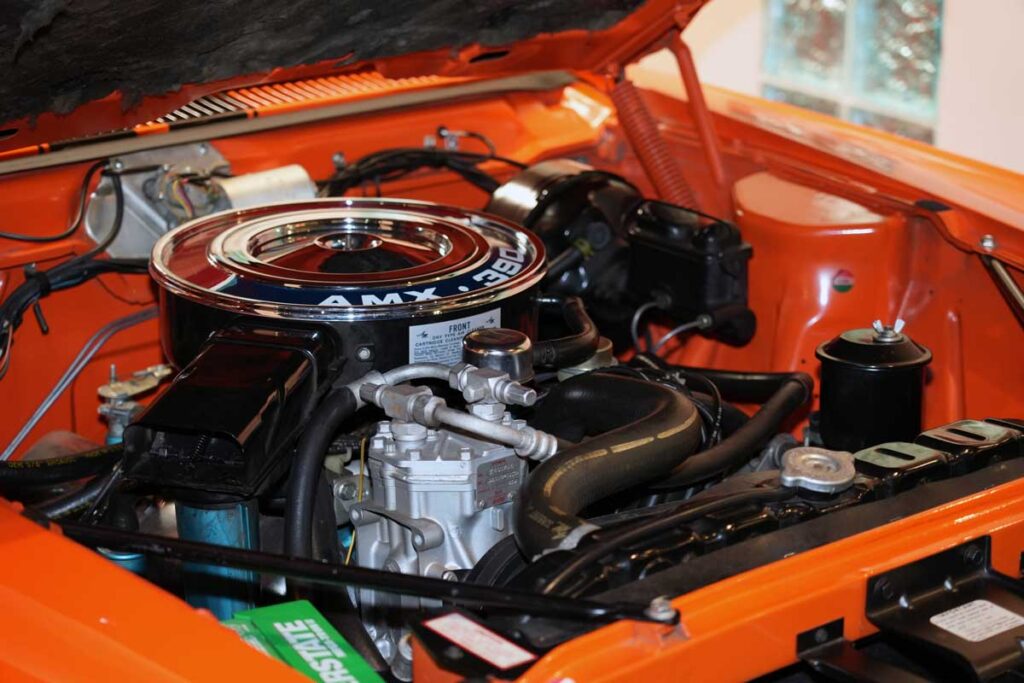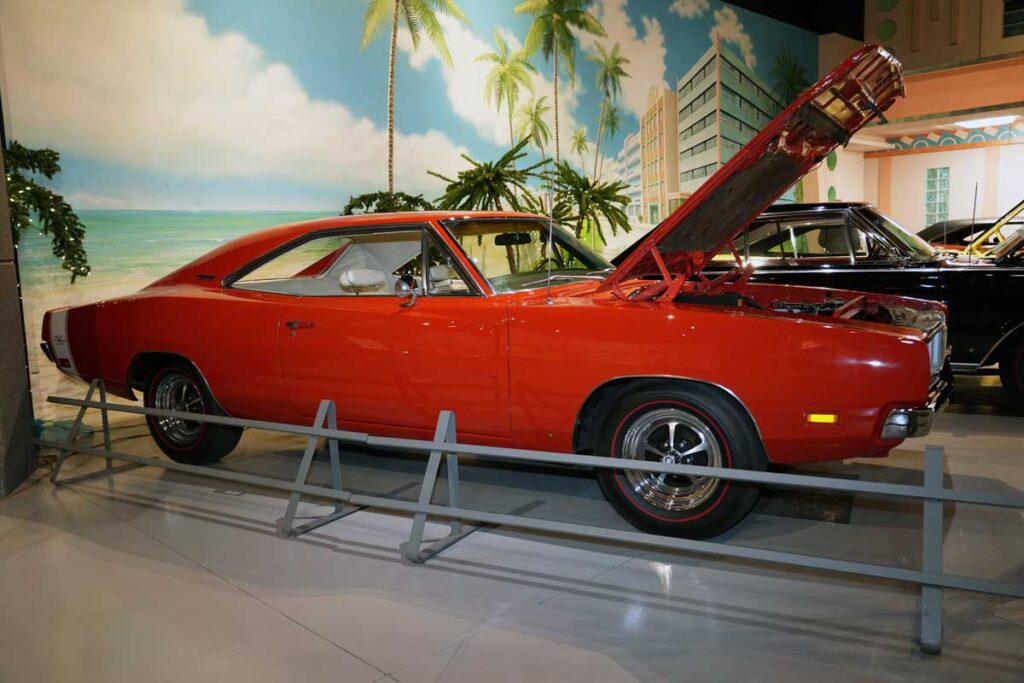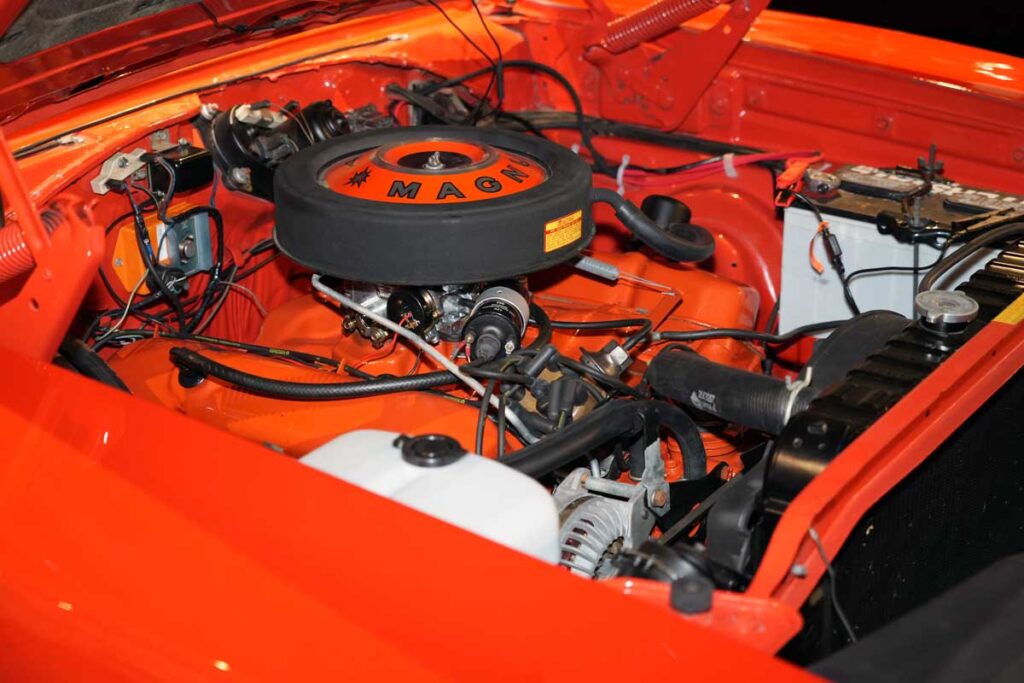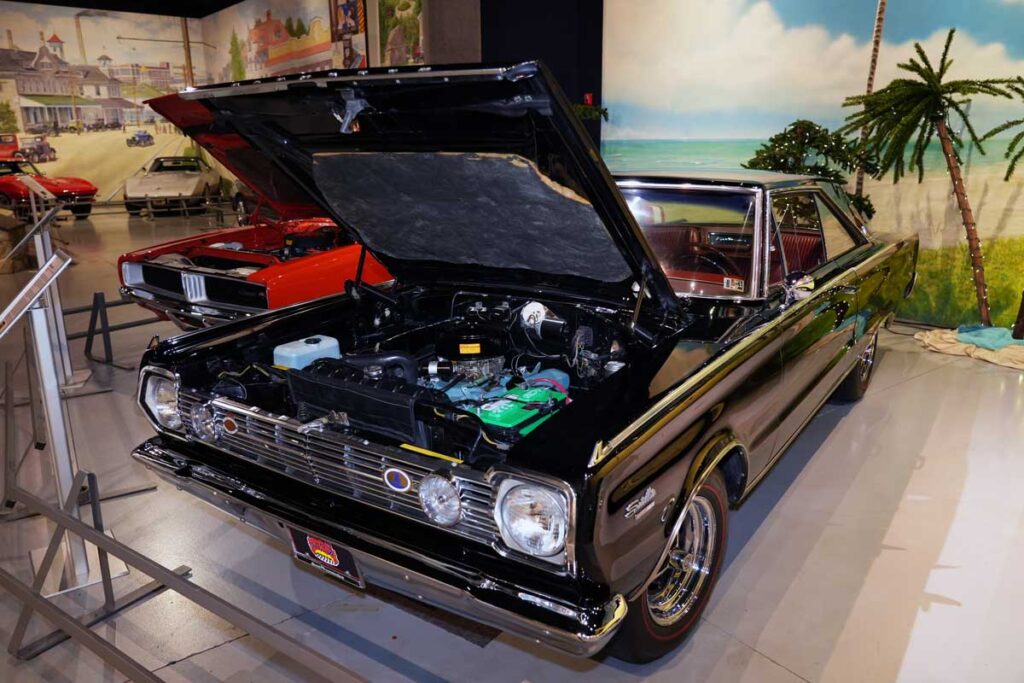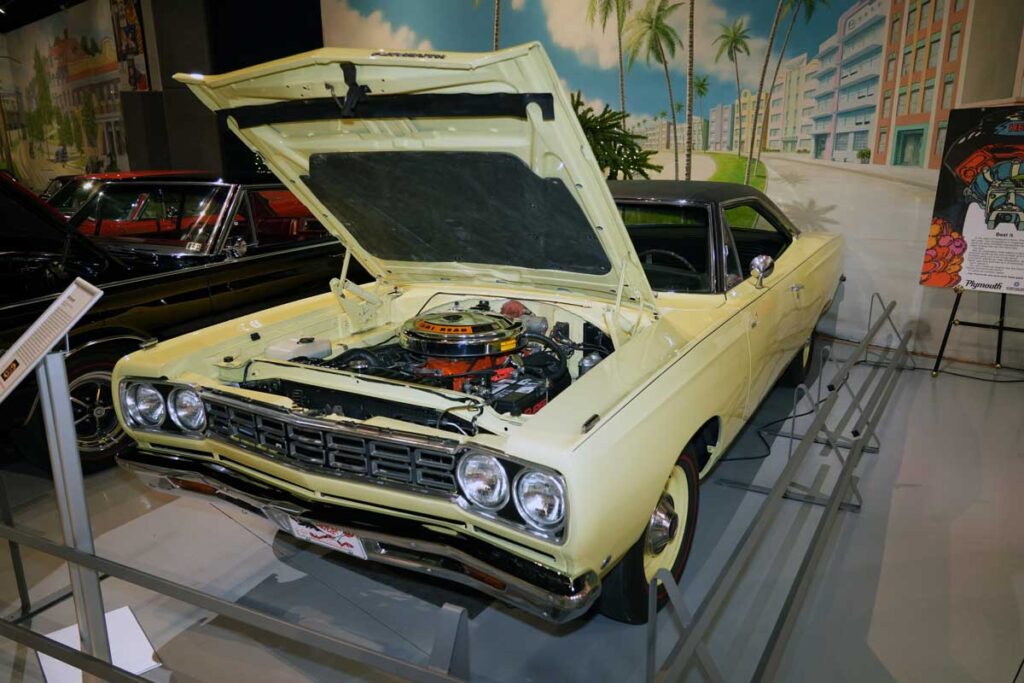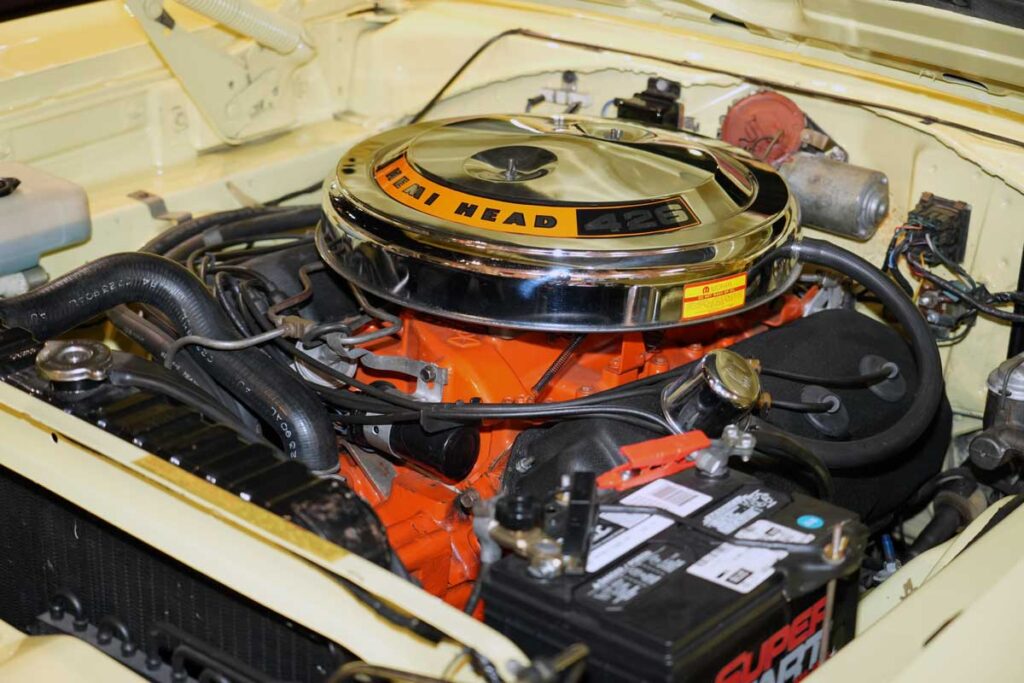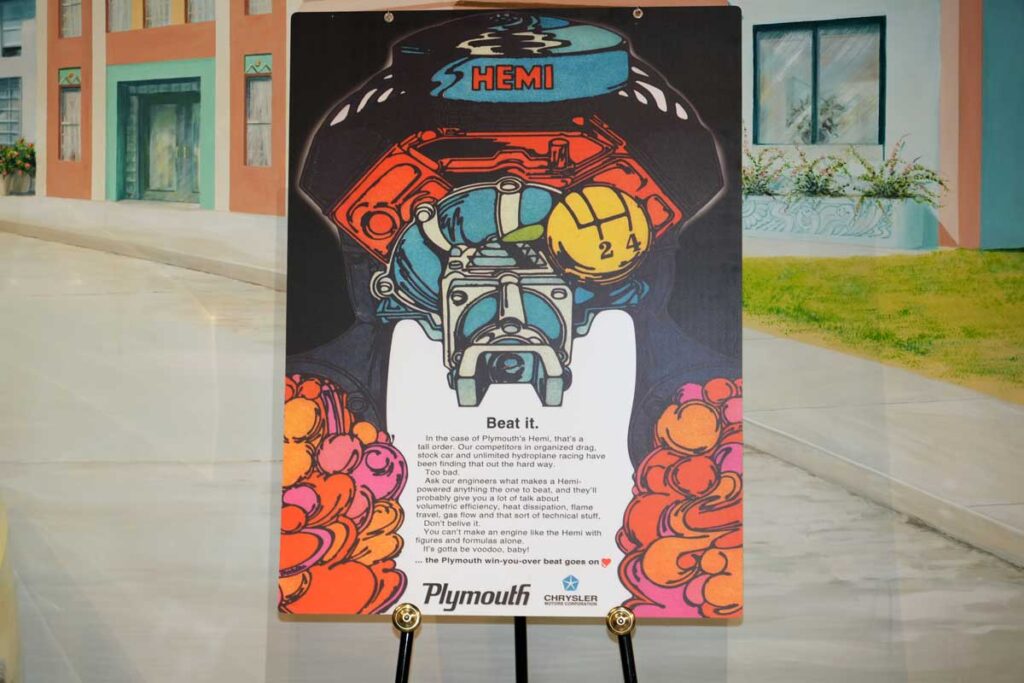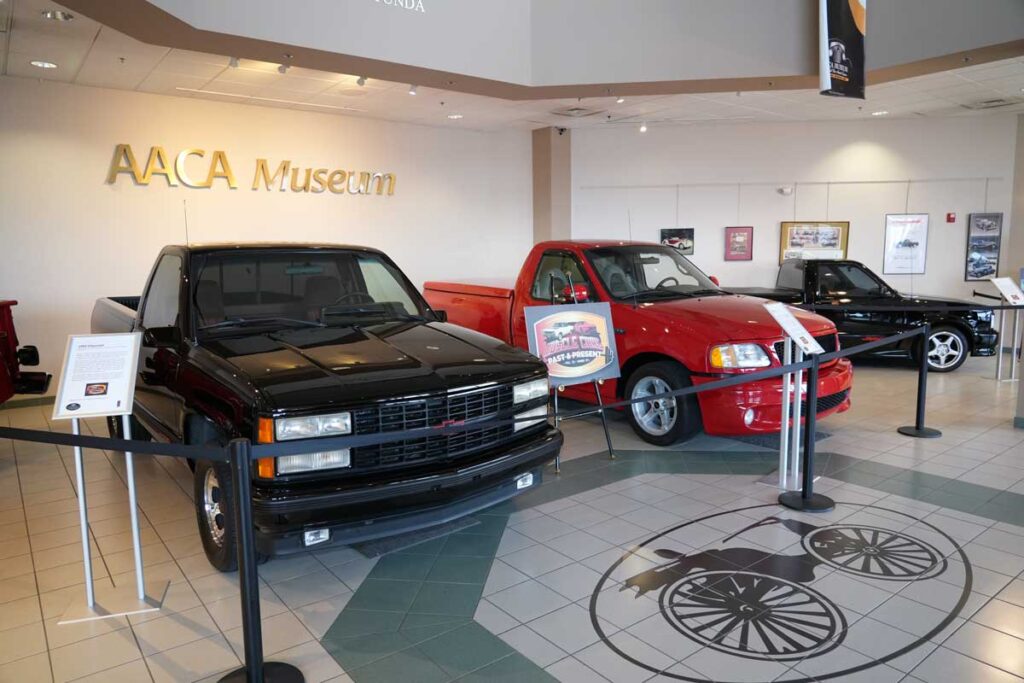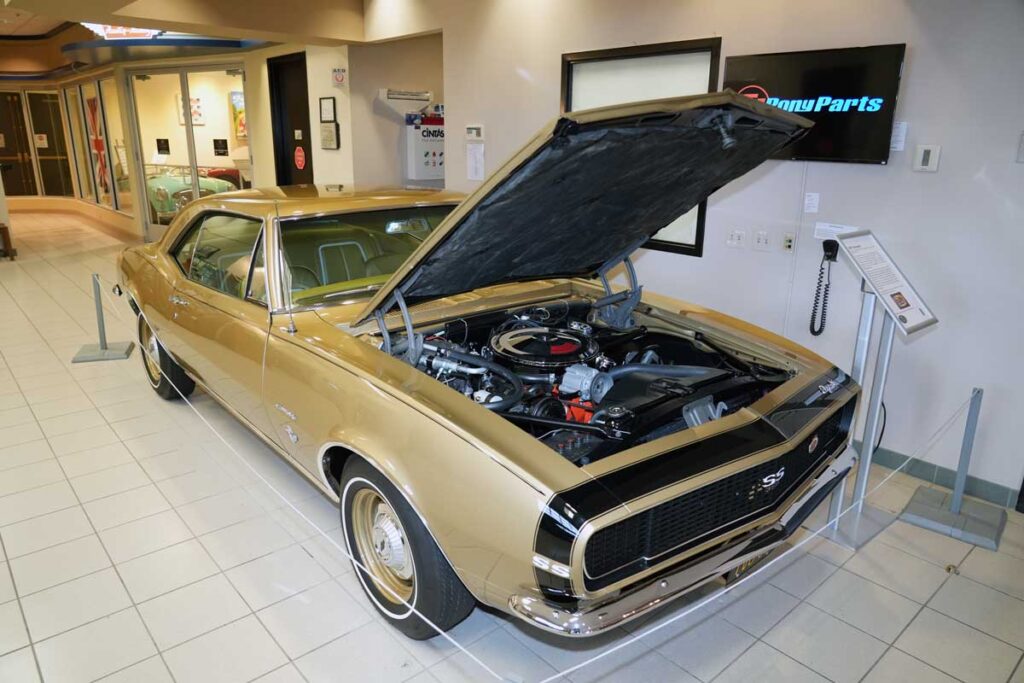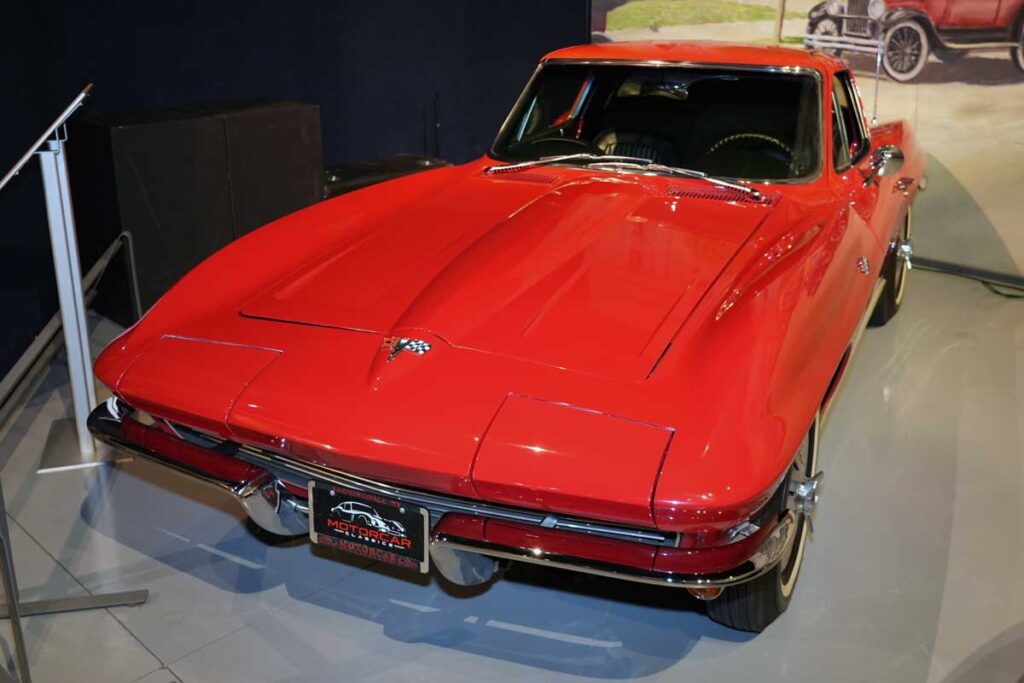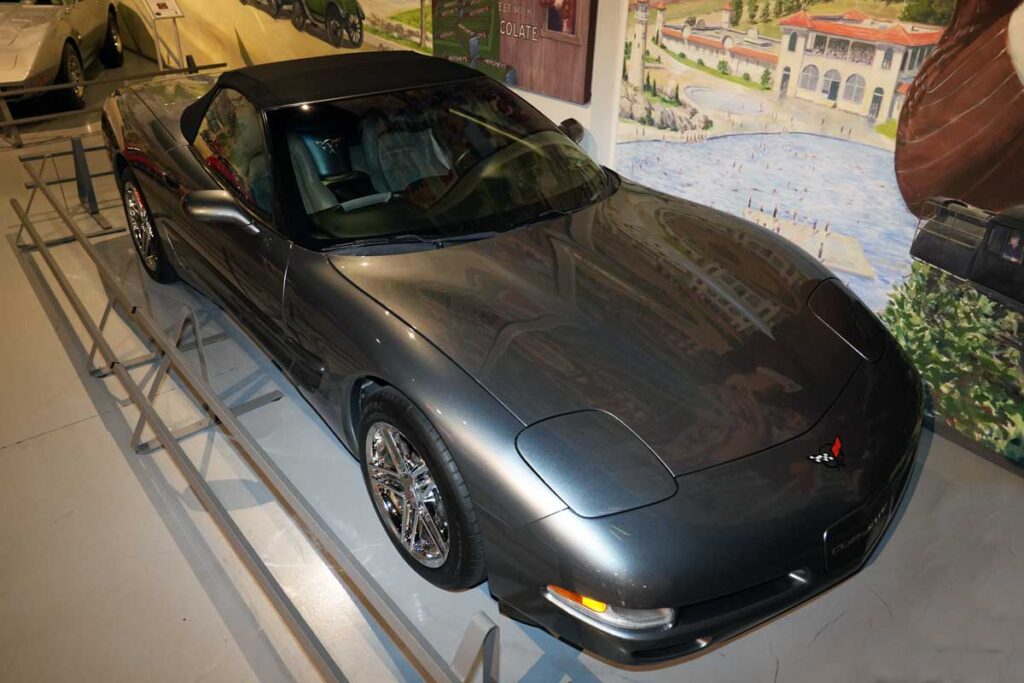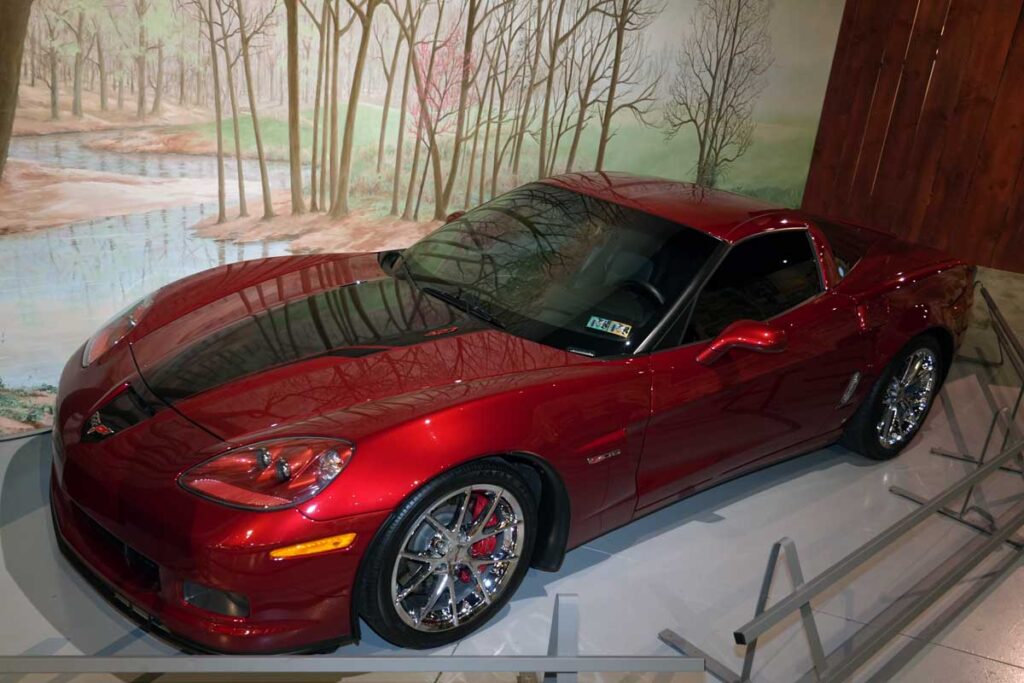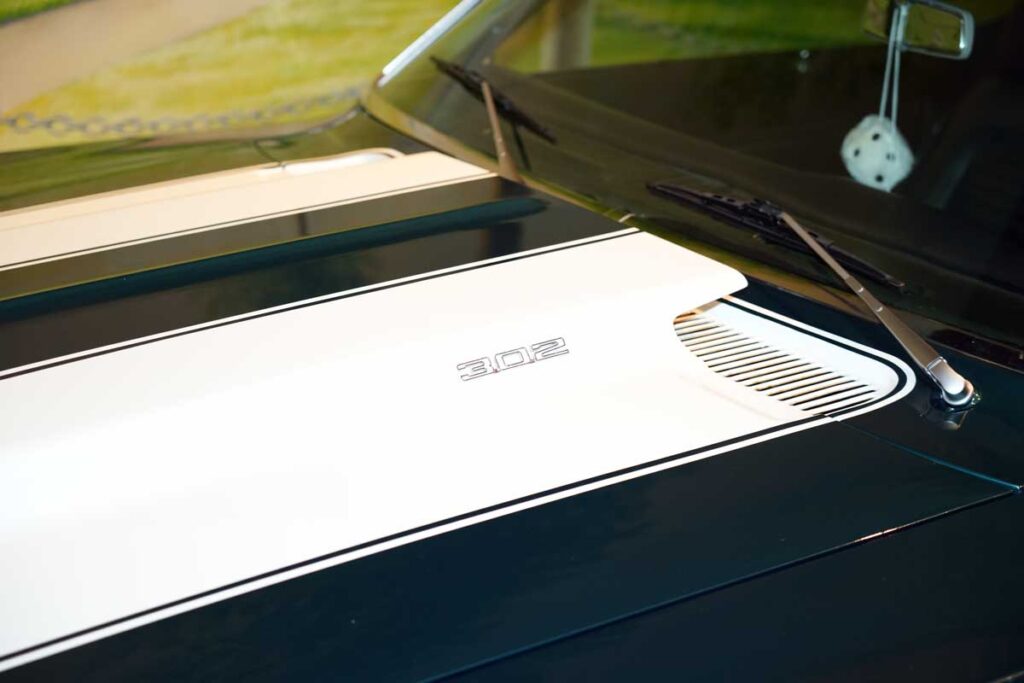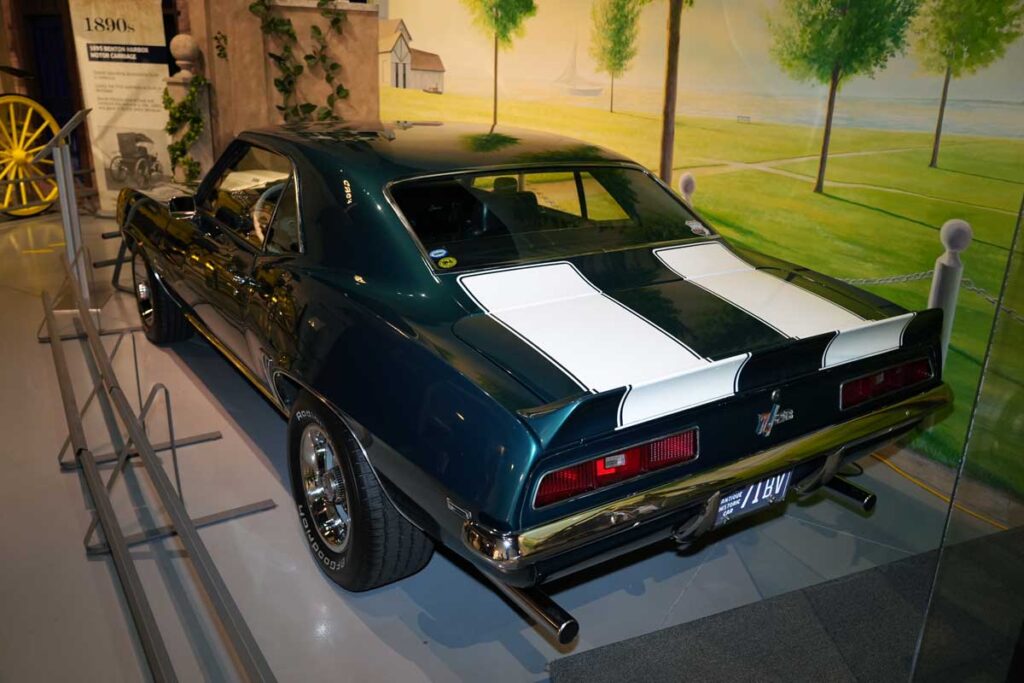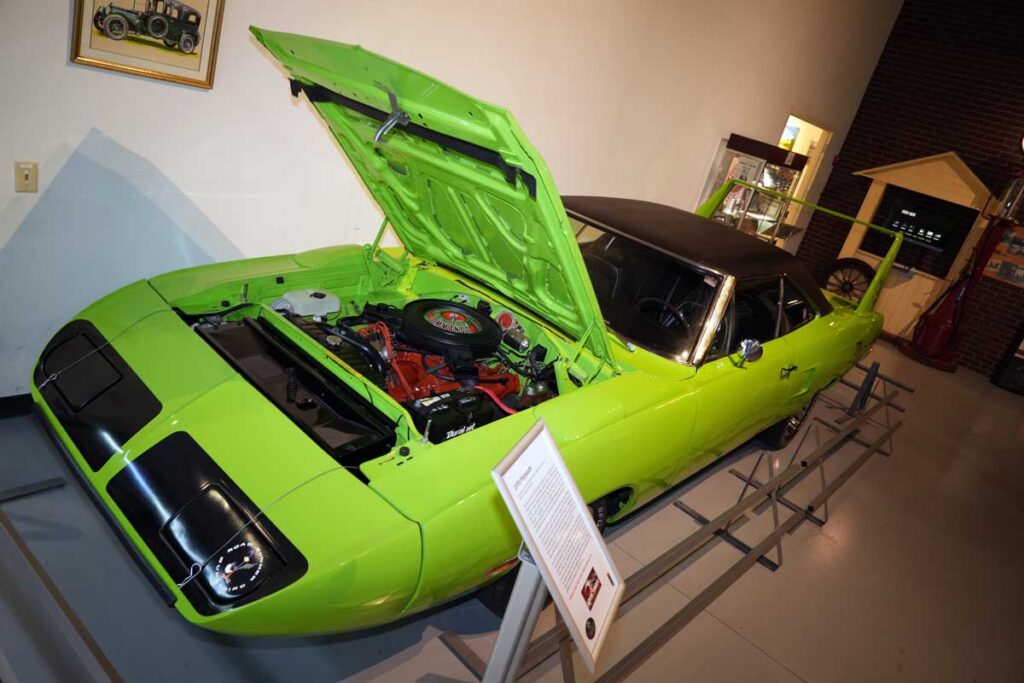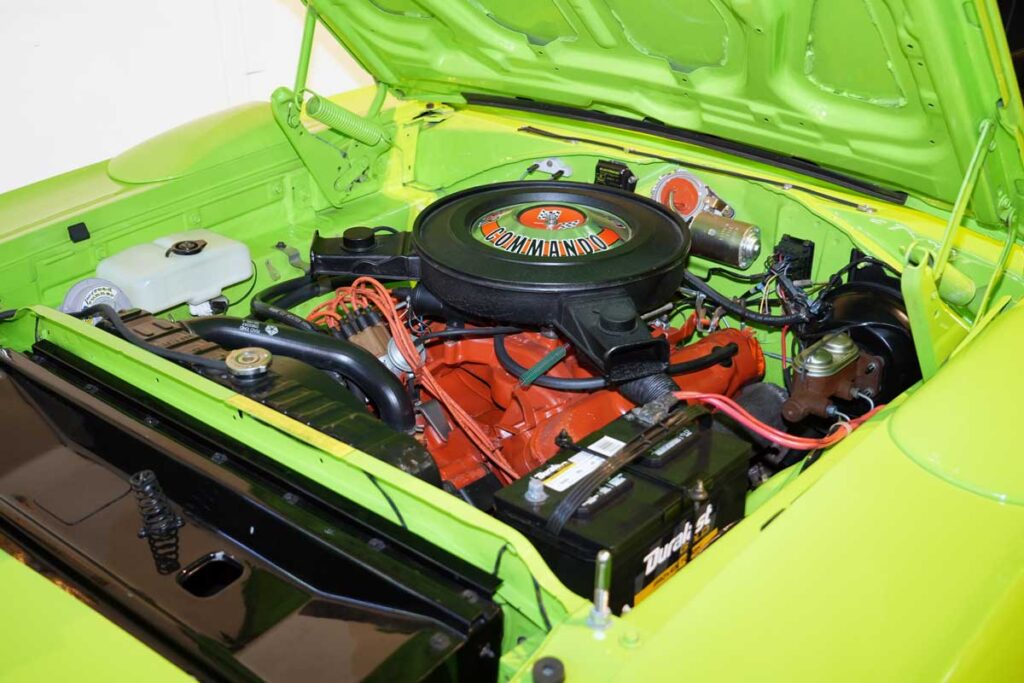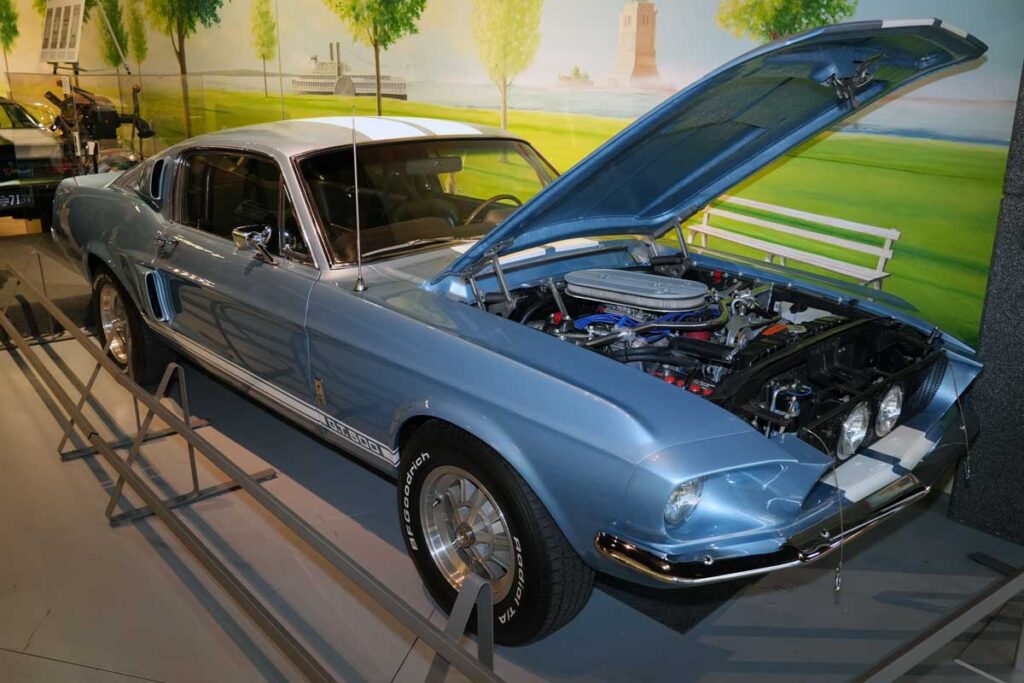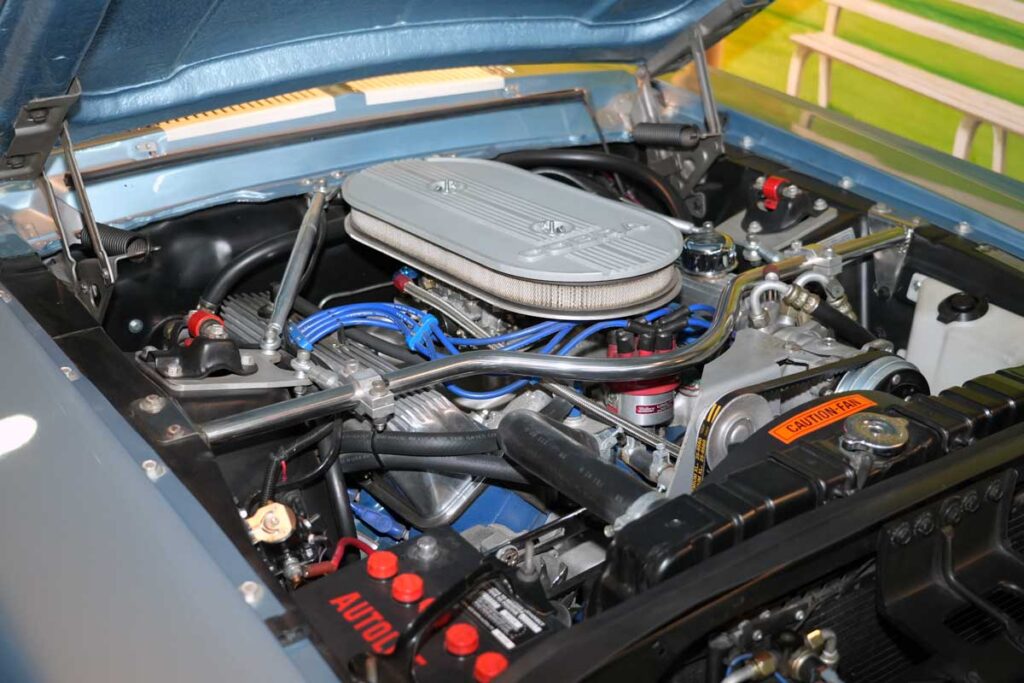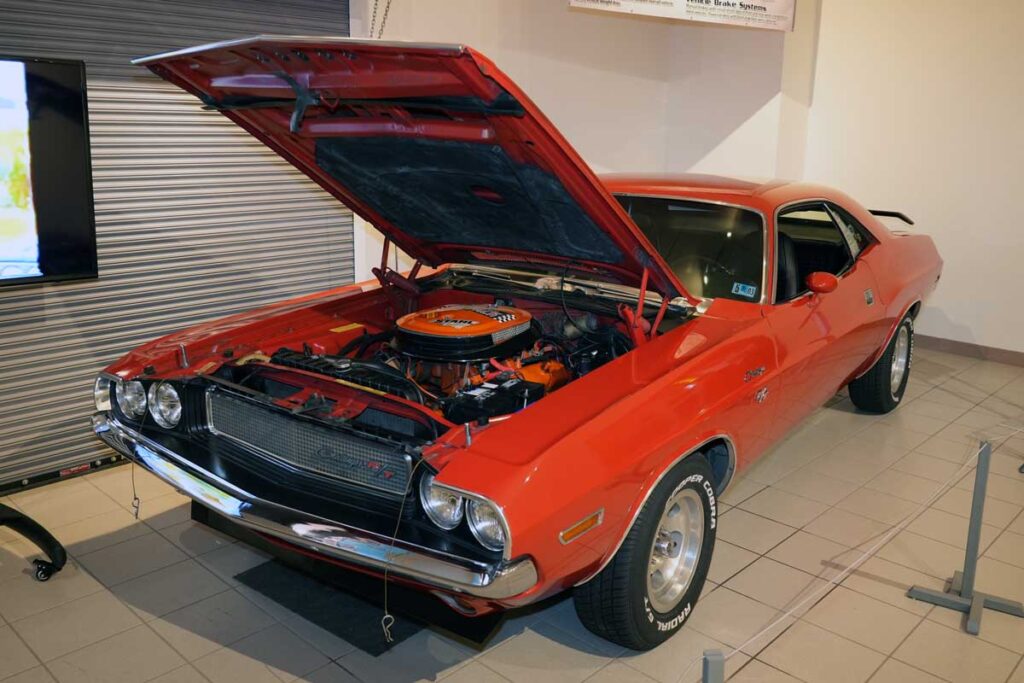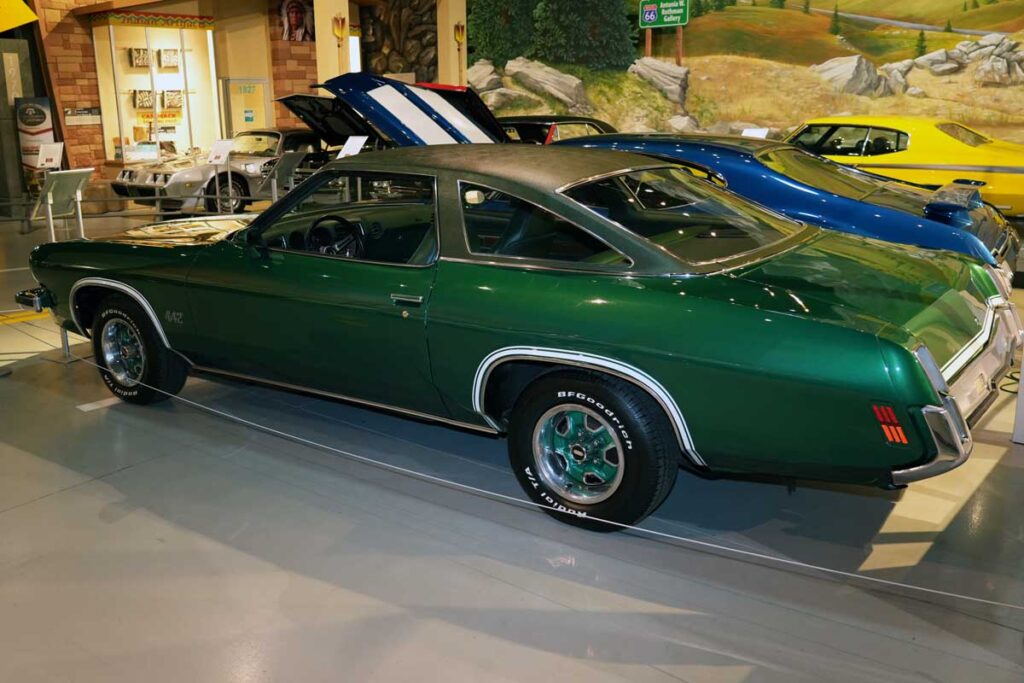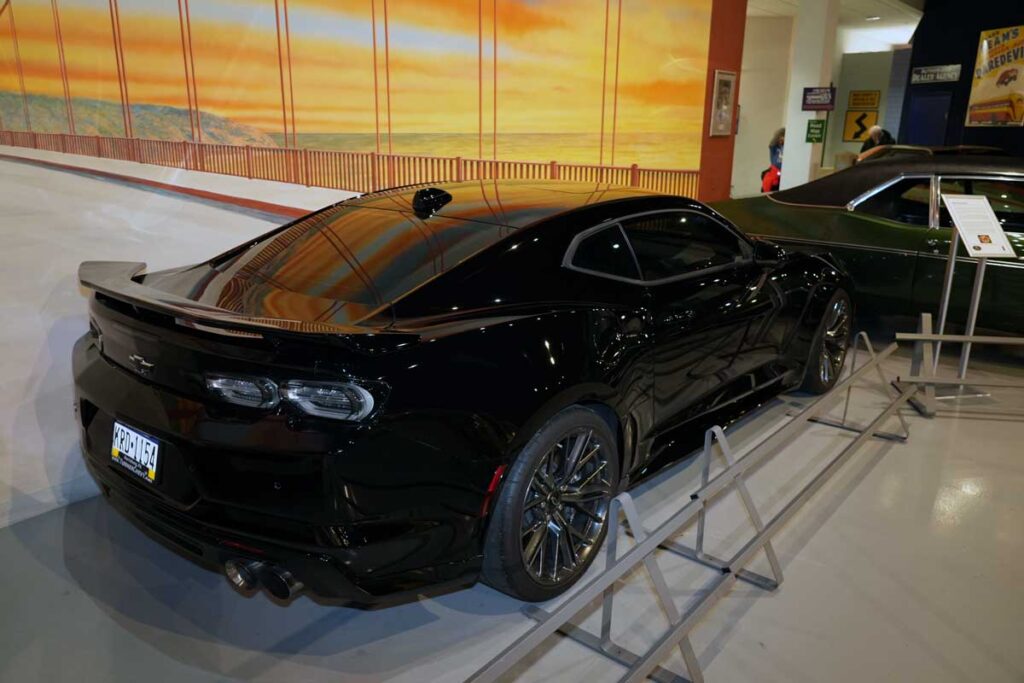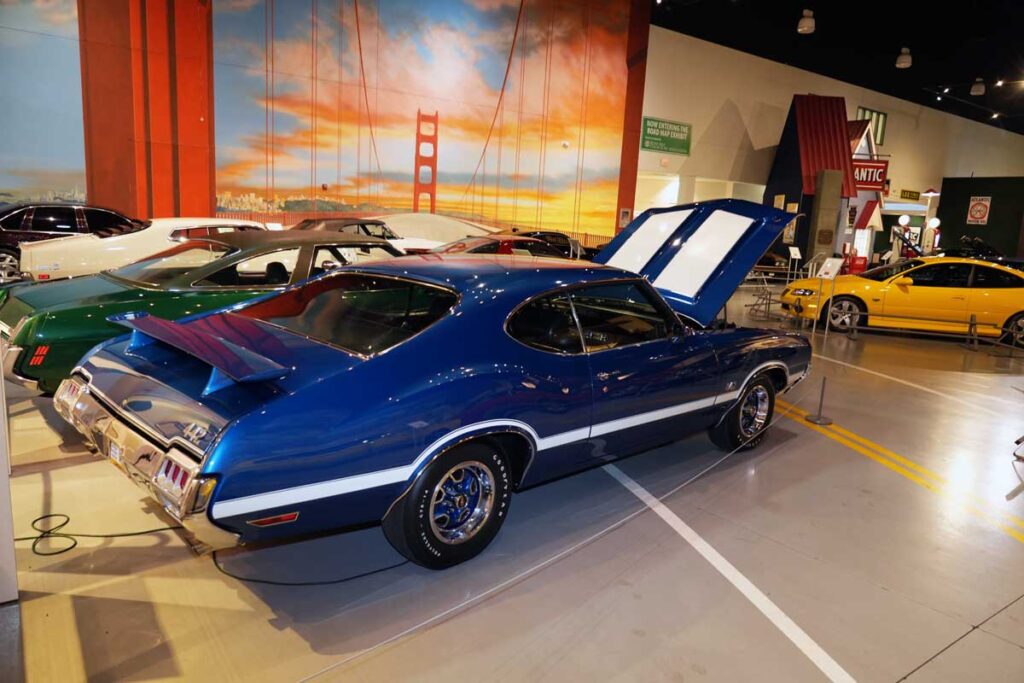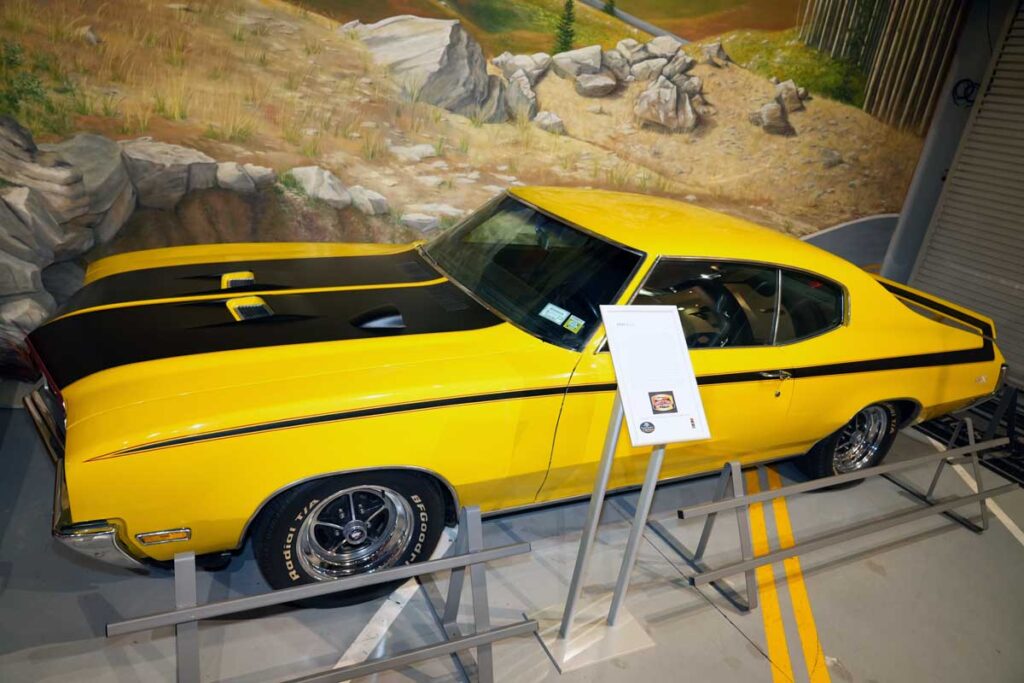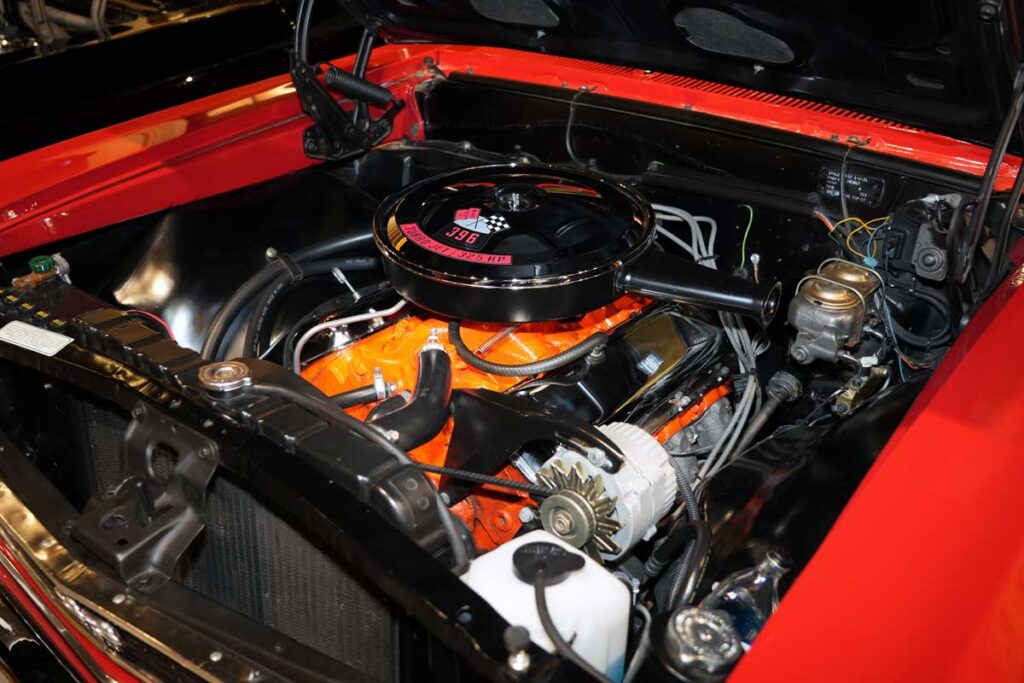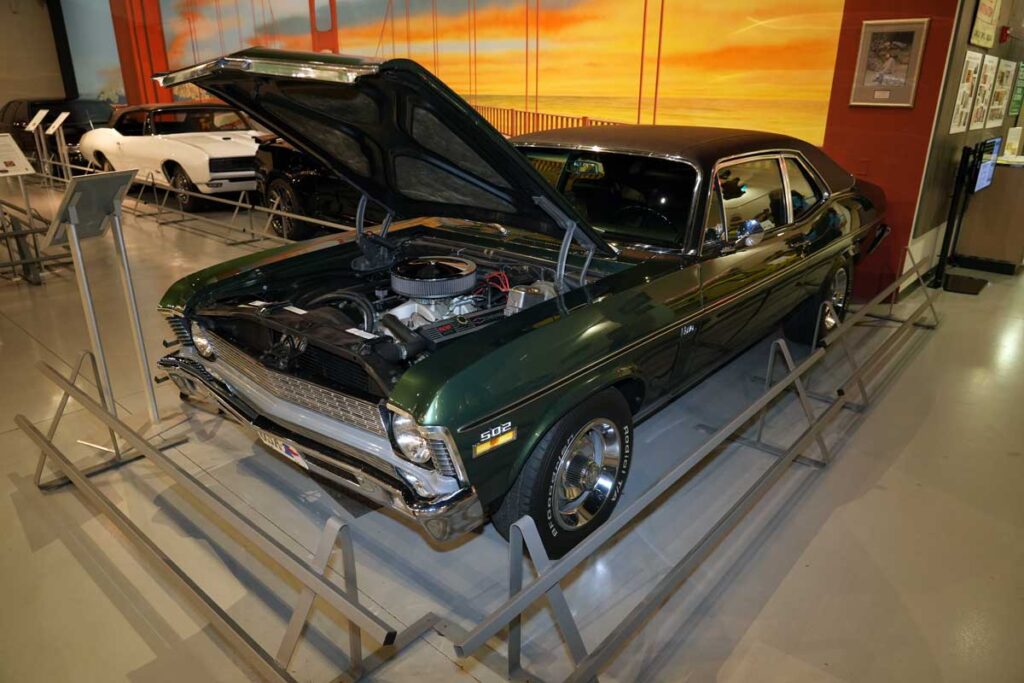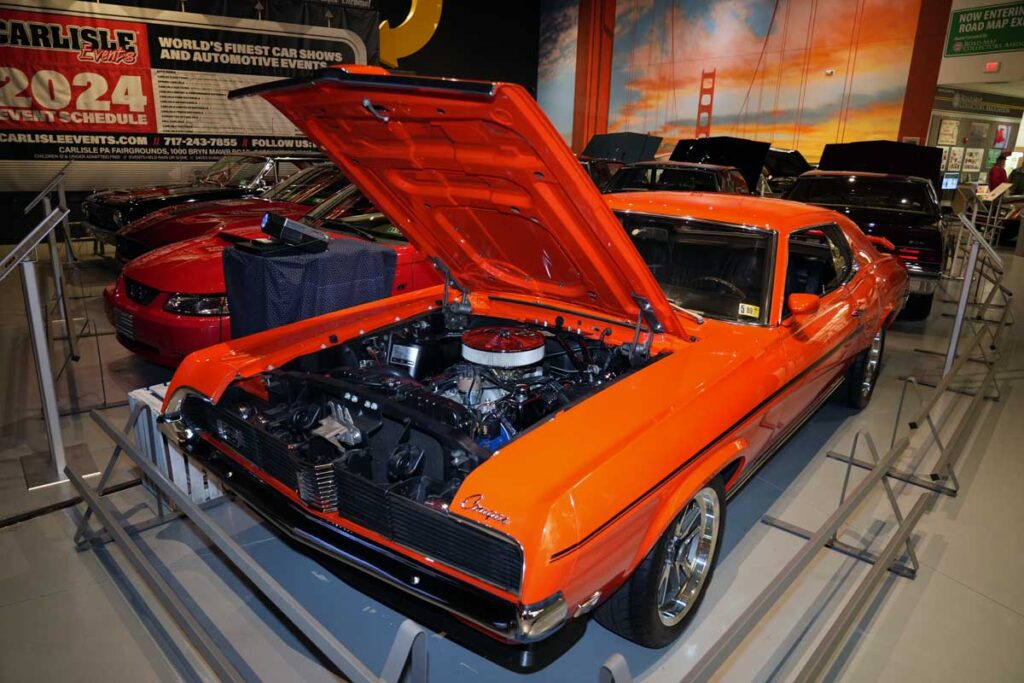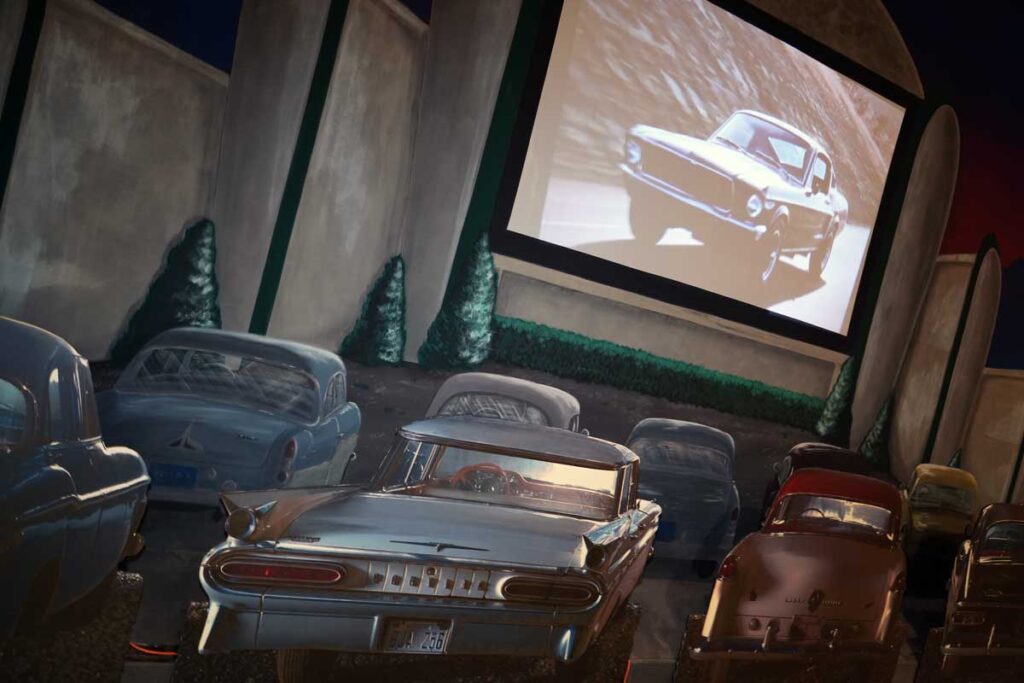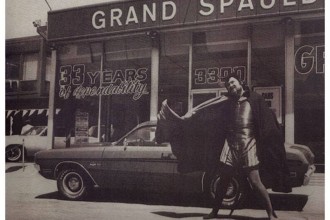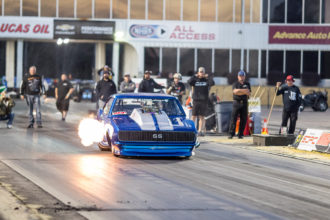photos by: the author
Talking a Walk Through Muscle Car History
Living in a snow belt region of the United States can lead to limited wintertime access to car-related events. Car shows tend to end by Halloween, and snow, and even worse salt, force us to put our classics away for hibernation as early as mid-November. To break the monotony of the winter blues, the AACA Museum in Hershey, Pennsylvania, has a Muscle Cars Past and Present exhibition that will run until Spring ’24.
The term muscle car and the cars praised often depend upon the era in which one grows up. But a generally accepted definition of a muscle car describes a high-performance American car, typically with a powerful engine and a focus on straight-line speed. These cars are known for their strong and aggressive appearance, front-engine, rear-wheel drive, and design that emphasizes performance.
Muscle cars gained popularity in the 1960s and 1970s, with iconic models like the Ford Mustang, Chevrolet Camaro, and Dodge Charger becoming emblematic of the genre. They were designed to deliver impressive acceleration and speed, making them popular among enthusiasts who appreciate power and style.
One horsepower per cubic inch is another yardstick some enthusiasts use to determine a viable muscle car contender. That being the case, a 1956 Chrysler 300B would be the first American production car to fit that definition.
In the mid-to-late 1980s, the muscle car returned to the scene after a decade of emissions-related dormancy. Muscle cars expanded through the 1990s and 2000s, with the Ford Mustang, Chevrolet Camaro, and Dodge Charger (and Challenger) leading the way. A late-model muscle car expands the performance envelope by performing in a straight line and handling the twisties while providing excellent fuel economy and demonstrating impeccable street manners.
Upon entering the AACA Museum, we were greeted by a 1969 Dodge Dart GTS sporting a 340 and green paint with a deleted tail bumblebee stripe. A GTS was perfect for the track and well-balanced for the era on the street. Just across the aisle in the main hallway was a beautiful 1967 Camaro wearing gold paint with a 327 nestled between the front fenders.
Moving from the main hall to the muscle car section of the museum provided just what we desired – beautiful old-school and late-model high-performance vehicles. Corvettes of multiple decades were sprinkled throughout the exhibit. A gorgeous 1969 DZ 302 Camaro Z28 was slipped between the Corvettes. Butted up to the Camaro was a 1967 Mustang GT 500 with a 428 Cobra Jet.
Several other Camaros from the 1980s and 2000s were present. The Ford contingent was represented by an Official Pace Car 1979 Ford Mustang and a 1971 Torino Cobra. A 1979 Trans Am, a 1987 Trans Am GTA, and a 1989 Firebird were displayed. A good-looking convertible GTO was also present in keeping with the Pontiac theme.
Stepping back to a little before the period typically considered the muscle car era was a 1962 Chevrolet Bel Air with a 409 and a 4-speed transmission. With 409 horsepower on tap, it meets the requirement of one hp per cube. A 1996 Chevrolet Impala SS with an LT1 350 was on the other end of the spectrum. While not a traditional muscle car, the Impala came with the 9C1 police options package.
Lastly, the rest of the exhibition was filled with Mopars and Buicks. Mopar A-, B-, and E-bodies were represented, with the majority being late 1960s B-bodies, including a Charger, a Coronet, and a Satellite with big blocks – one with a Hemi. The Buicks included a GSX and three T-Type V6 turbo cars. Each T-Type was an exquisite example of the resurgence of the second muscle car era starting in the mid-1980s.
Also at the museum was a large Tucker 48 display, motorcycles, busses, pickup trucks, and even an evolution of the headlight presentation. With all the muscle cars and other displays at the museum, our wintertime blues were lessened, at least for now.
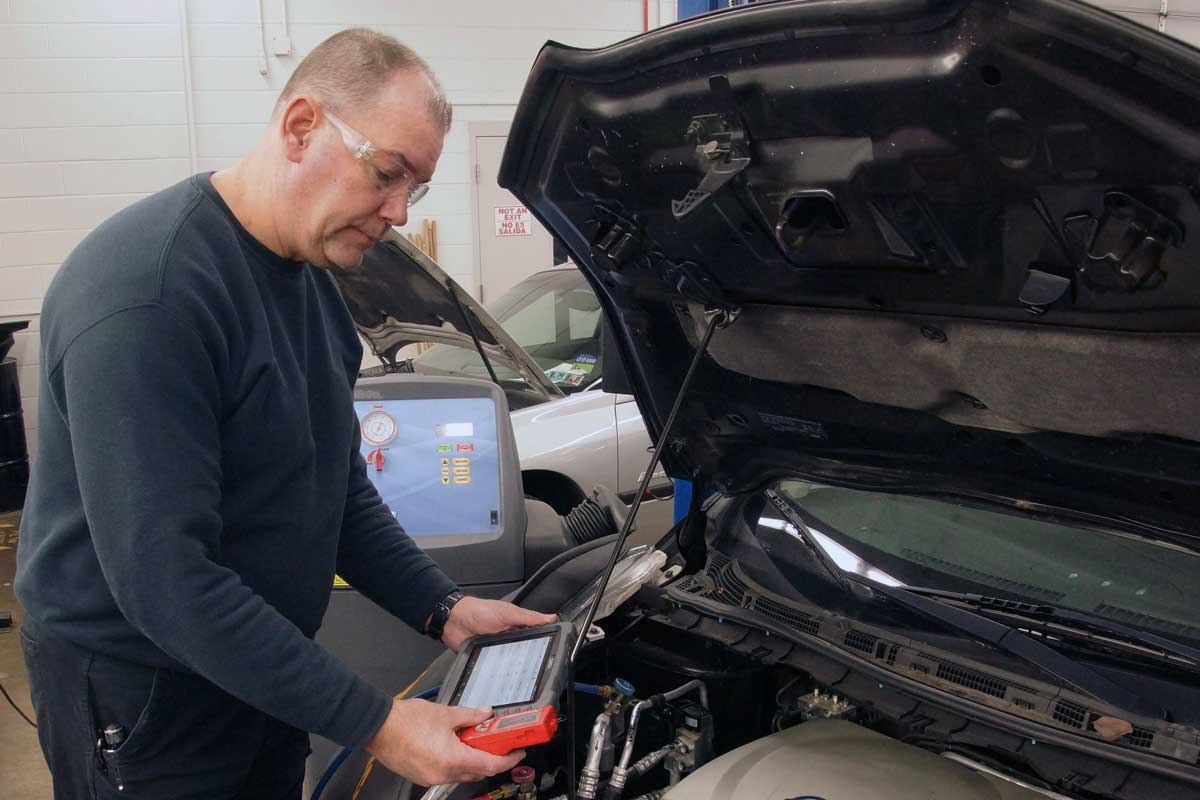
For the last twenty-five years, Chris has been an automotive college professor. Since 2003, he has taught at Pennsylvania College of Technology in Williamsport, PA. Chris instructs automotive electrical & electronics, HVAC, and various high-performance classes, which include the usage of a Mustang chassis dyno, flow benches, and various machining equipment. Recently, he had a vintage vehicle upholstery class added to his teaching assignments. Chris owns a ’67 273 Dart, a ’75 Slant-Six Dart, an ’06 5.7L Hemi Police Pursuit Charger, and a ’12 Cummins turbo diesel Ram, and he is a multi-time track champion (drag racing) with his ’69 340 Dart, which he has owned since 1989.






